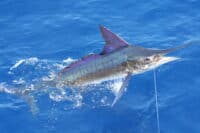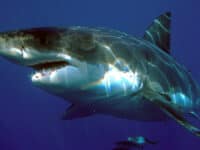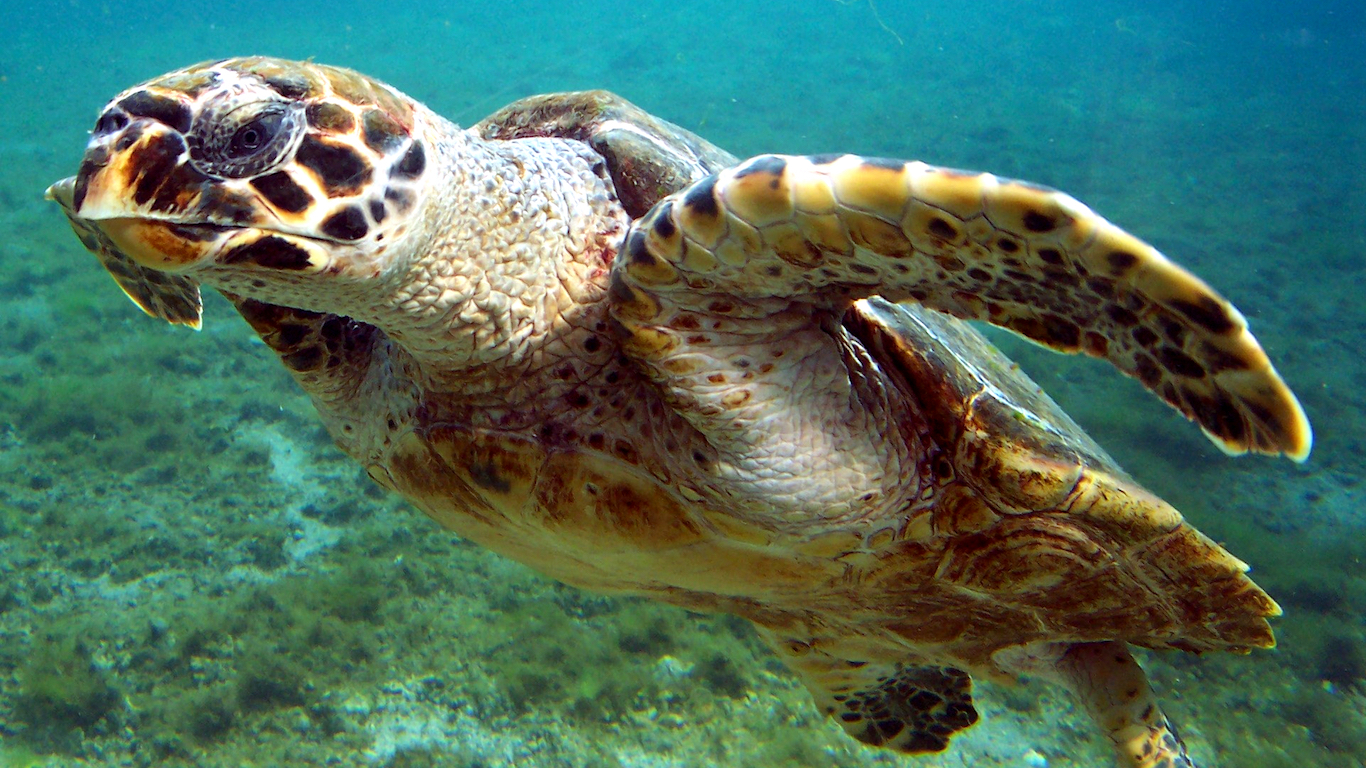
Federal wildlife officials have recently announced the presumed extinction of some 22 animals that formerly existed in the U.S., including 11 birds, eight freshwater mussels, two fish, and a bat. The source of their elimination is primarily human activity — the upsetting of natural evolutionary changes through habitat destruction, pollution, over-hunting and -fishing, and, potentially most devastatingly, climate change.
We can expect extinction numbers to grow at an unprecedented rate as human populations spread and the earth gets hotter. Two years ago, the United Nations sounded the alarm, warning that a million species of plants and animals around the world, out of eight million existing today, were threatened with extinction, and that climate change has accelerated the rate at which they will leave the face of the earth entirely.
The U.N. estimates that 75% of land environments and 66% of marine environments have already been altered by human activity, causing a 20% reduction in the abundance of land animals, as well as a potential reduction in fish biomass of up to 25% by the end of the century.
For the United States, the picture is less gloomy, at least for the immediate future, thanks to the Endangered Species Act (ESA), passed in 1973, which lists endangered and threatened species and provides for their protection and restoration. The law has, thus far, been a brilliant success, with 99% of listed species brought back from the edge of extinction. Most of the American animals now considered extinct, including many on the most recent list, died off before the enactment of the ESA.
What the ESA has taught us is that we can take effective action to slow extinction rates through sound management of human activities as they affect animal populations and habitat. Without such vigilance, animal species whose existence we have come to take for granted could disappear forever.
To determine the most threatened animals in every state, 24/7 Tempo reviewed the U.S. Fish & Wildlife Service’s Environmental Conservation Online System to find two animals listed as “endangered” that are native to each state. Information on the animals’ habitat also came from USFWS.
Click here to see the most threatened wildlife in every state
Click here to read our detailed methodology and findings
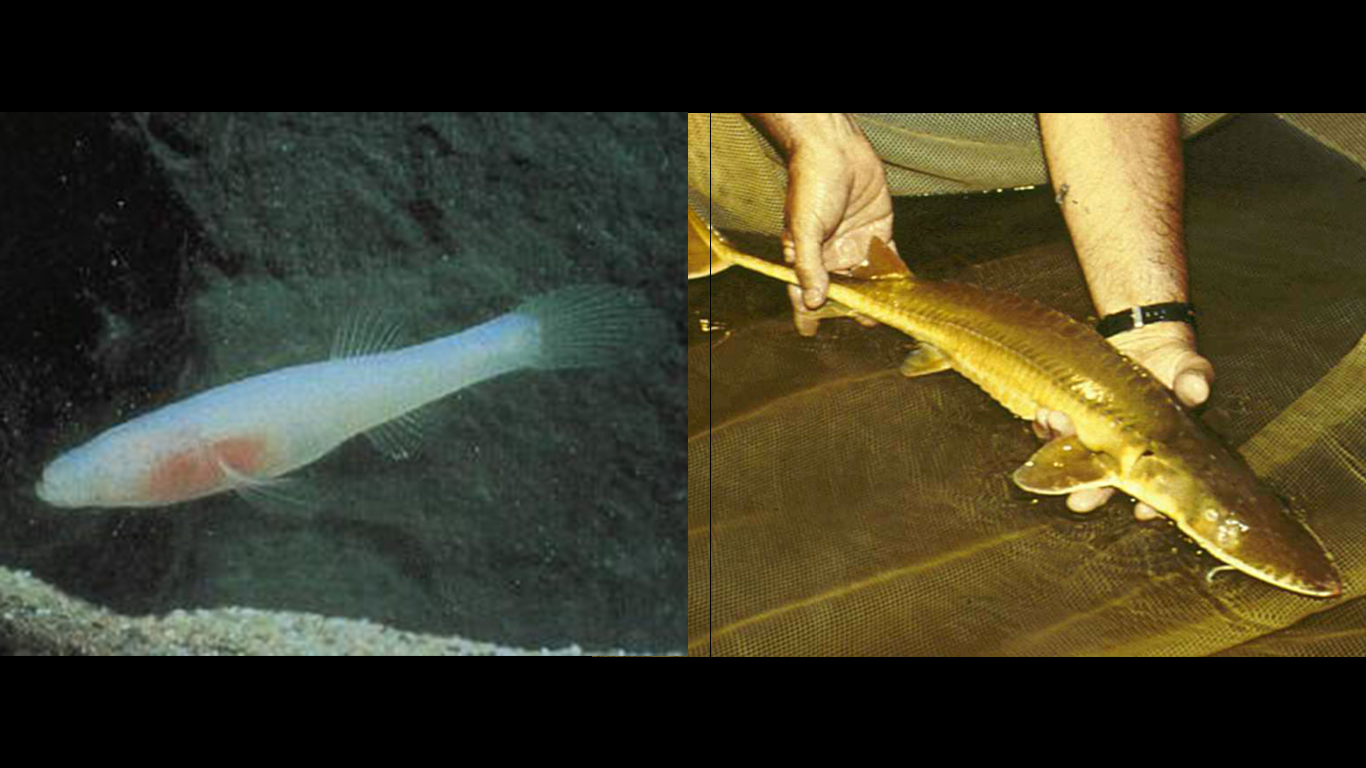
1. Alabama
> Selected endangered species: Cavefish (speoplatyrhinus poulsoni), Sturgeon (scaphirhynchus suttkusi)
[in-text-ad]
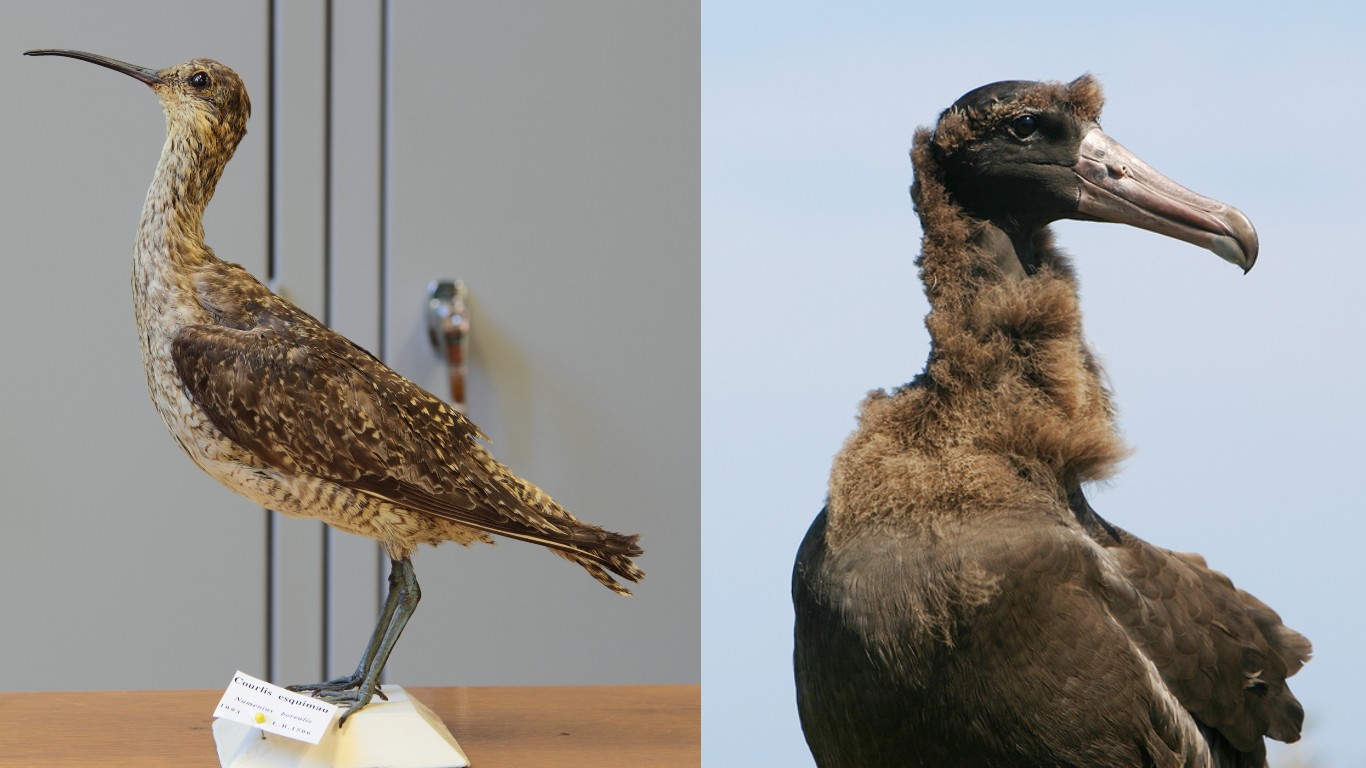
2. Alaska
> Selected endangered species: Eskimo Curlew (Numenius borealis), Short-tailed albatross (Phoebastria albatrus)
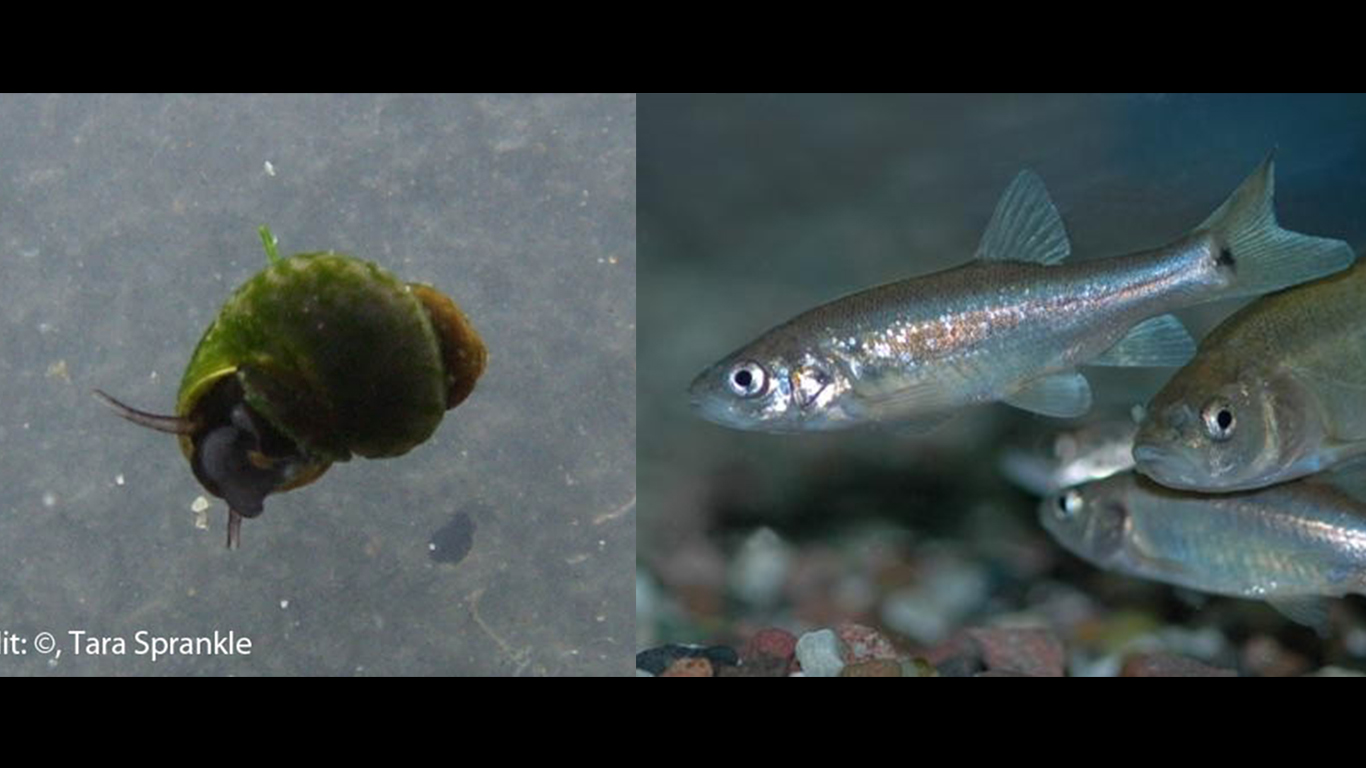
3. Arizona
> Selected endangered species: Yaqui Chub (gila purpurea), Three Forks Springsnail (pyrgulopsis trivialis)
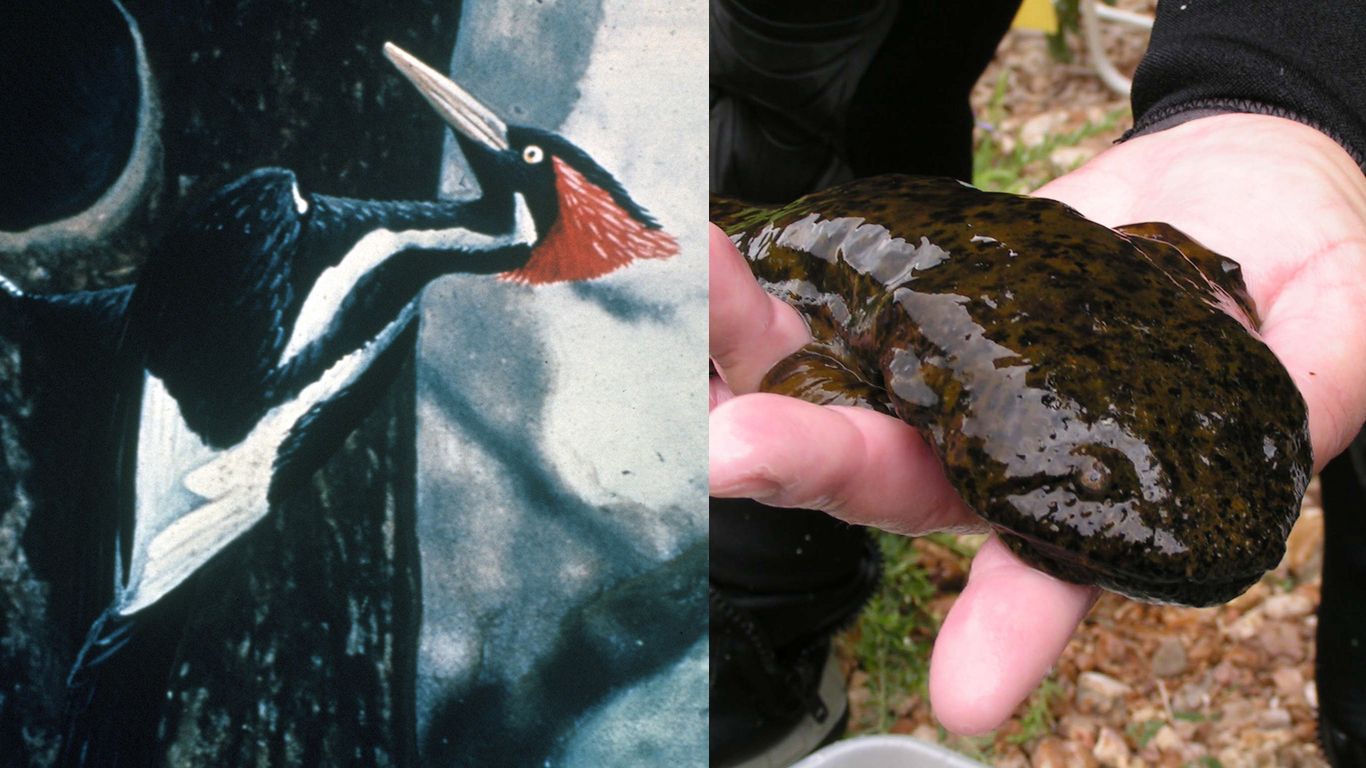
4. Arkansas
> Selected endangered species: Ivory-Billed Woodpecker (campephilus principalis), Ozark Hellbender (cryptobranchus alleganiensis bishopi)
[in-text-ad-2]
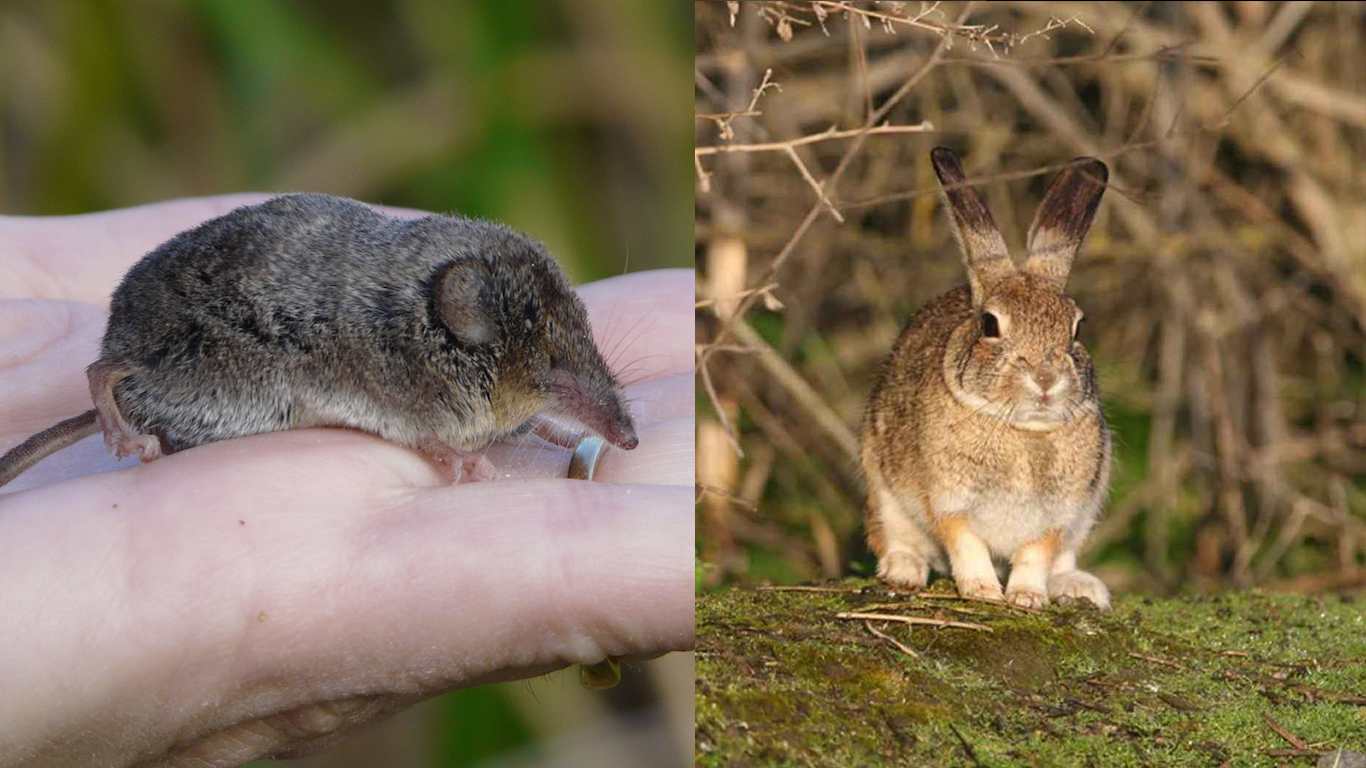
5. California
> Selected endangered species: Riparian Brush Rabbit (sylvilagus bachmani riparius), Buena Vista Lake Ornate Shrew (sorex ornatus relictus)
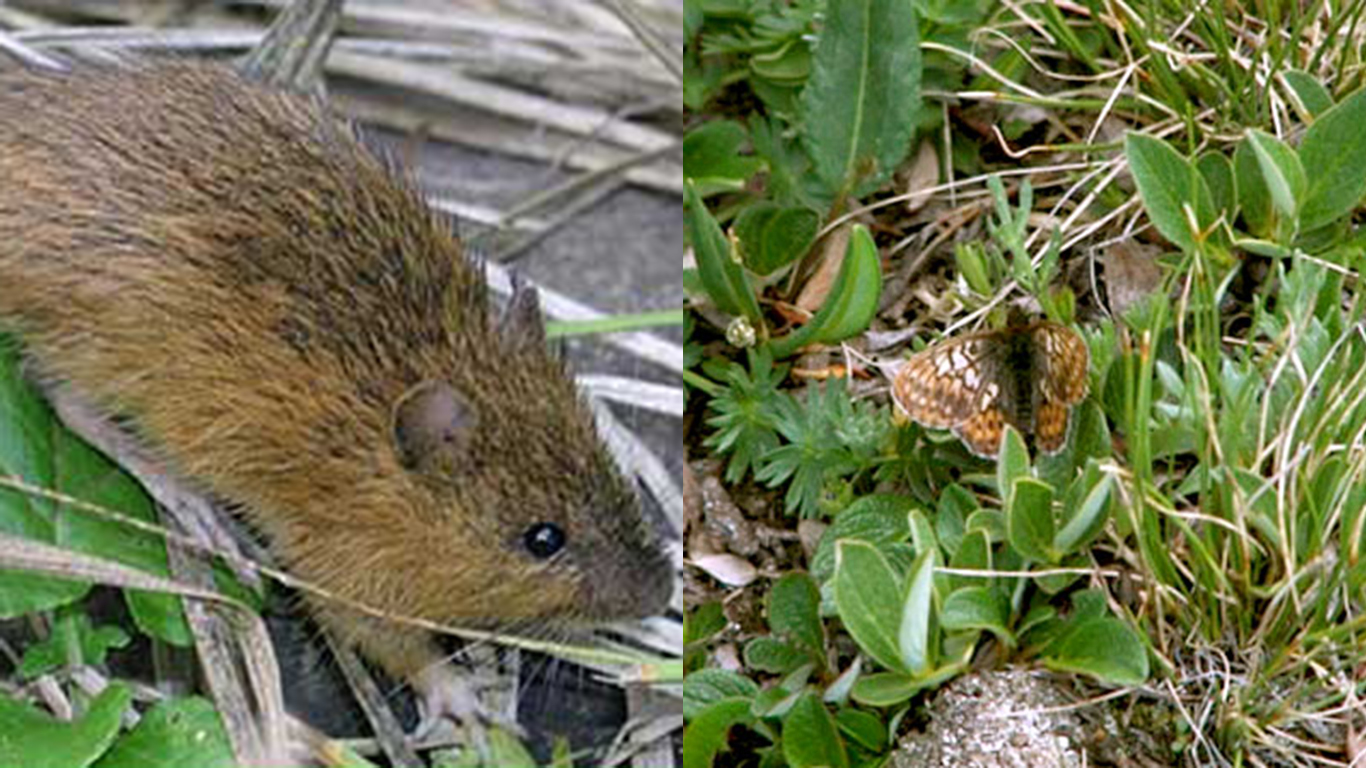
6. Colorado
> Selected endangered species: Uncompahgre Fritillary Butterfly (boloria acrocnema), Meadow Jumping Mouse (zapus hudsonius luteus)
[in-text-ad]
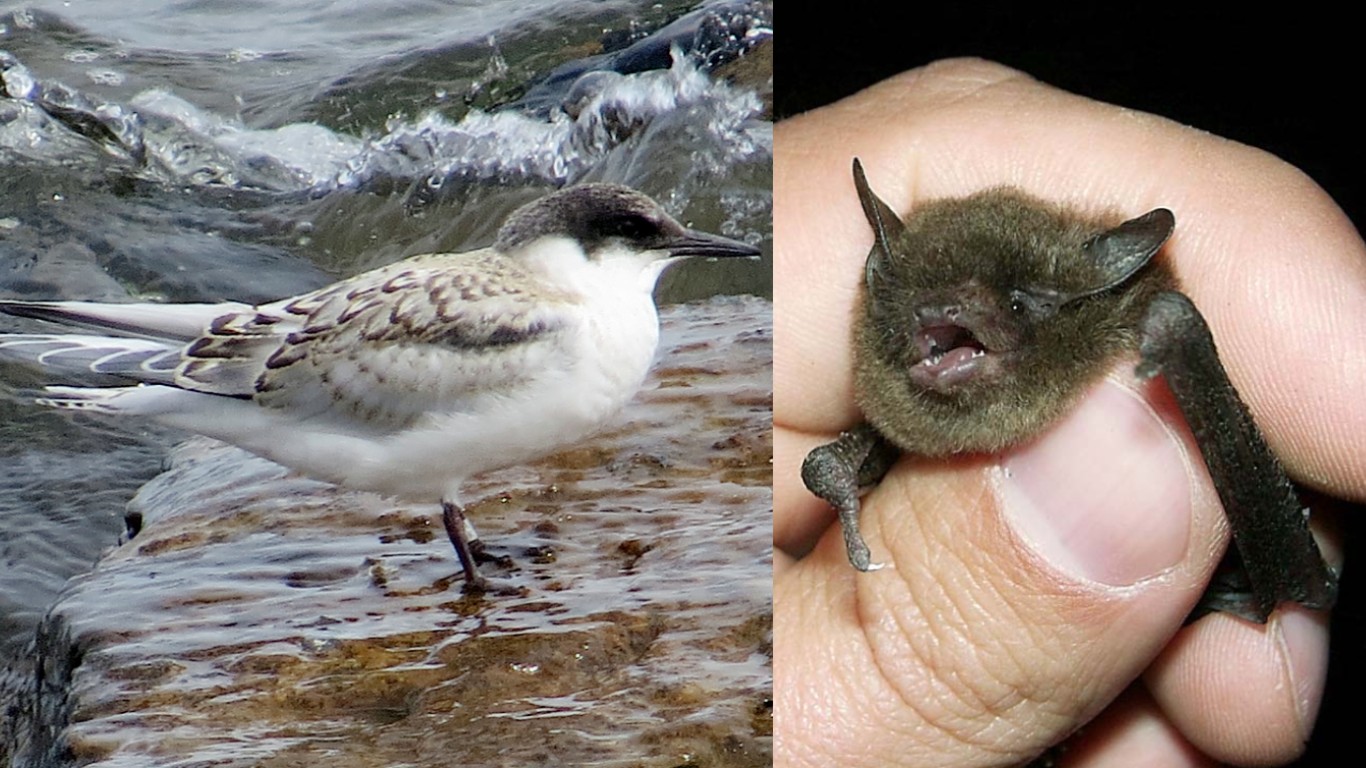
7. Connecticut
> Selected endangered species: Roseate tern (Sterna dougallii dougallii), Indiana Bat (myotis sodalis)
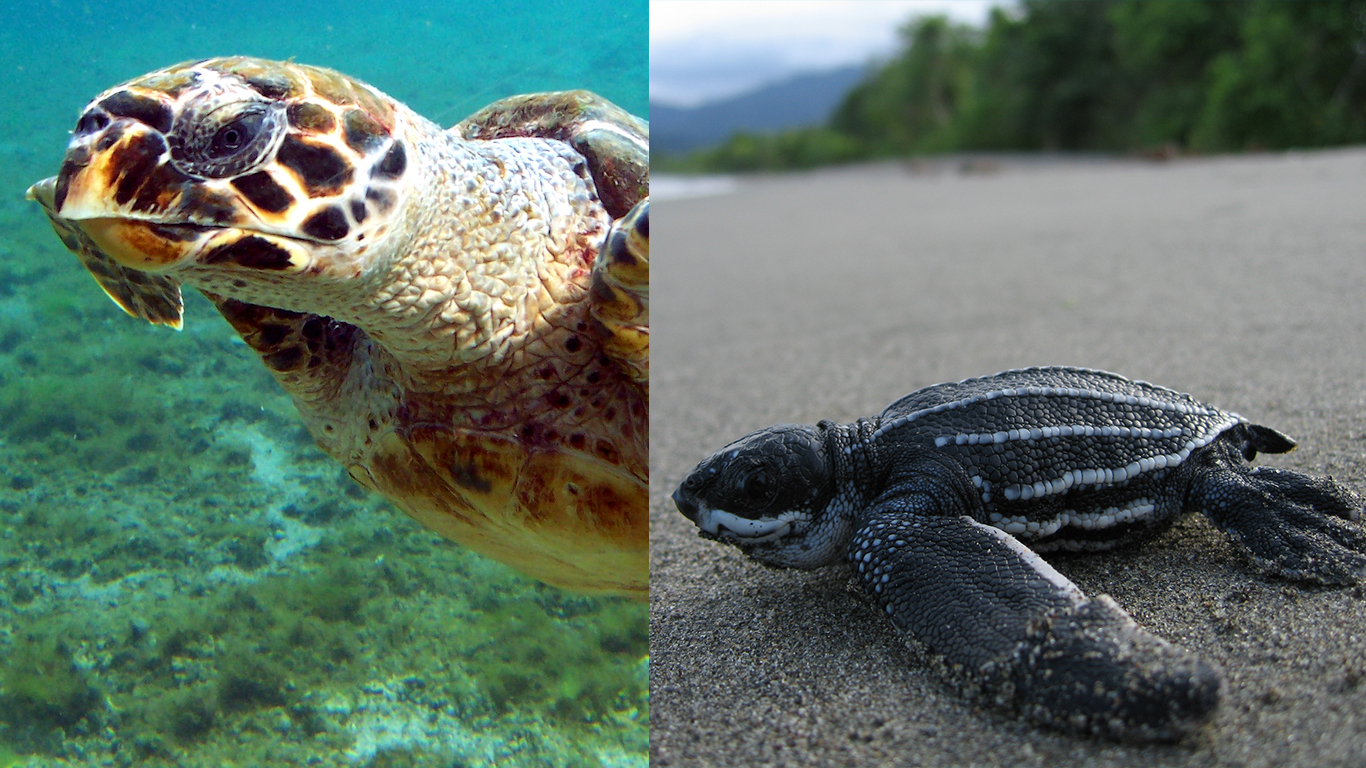
8. Delaware
> Selected endangered species: Hawksbill Sea Turtle (eretmochelys imbricata), Leatherback Sea Turtle (dermochelys coriacea)
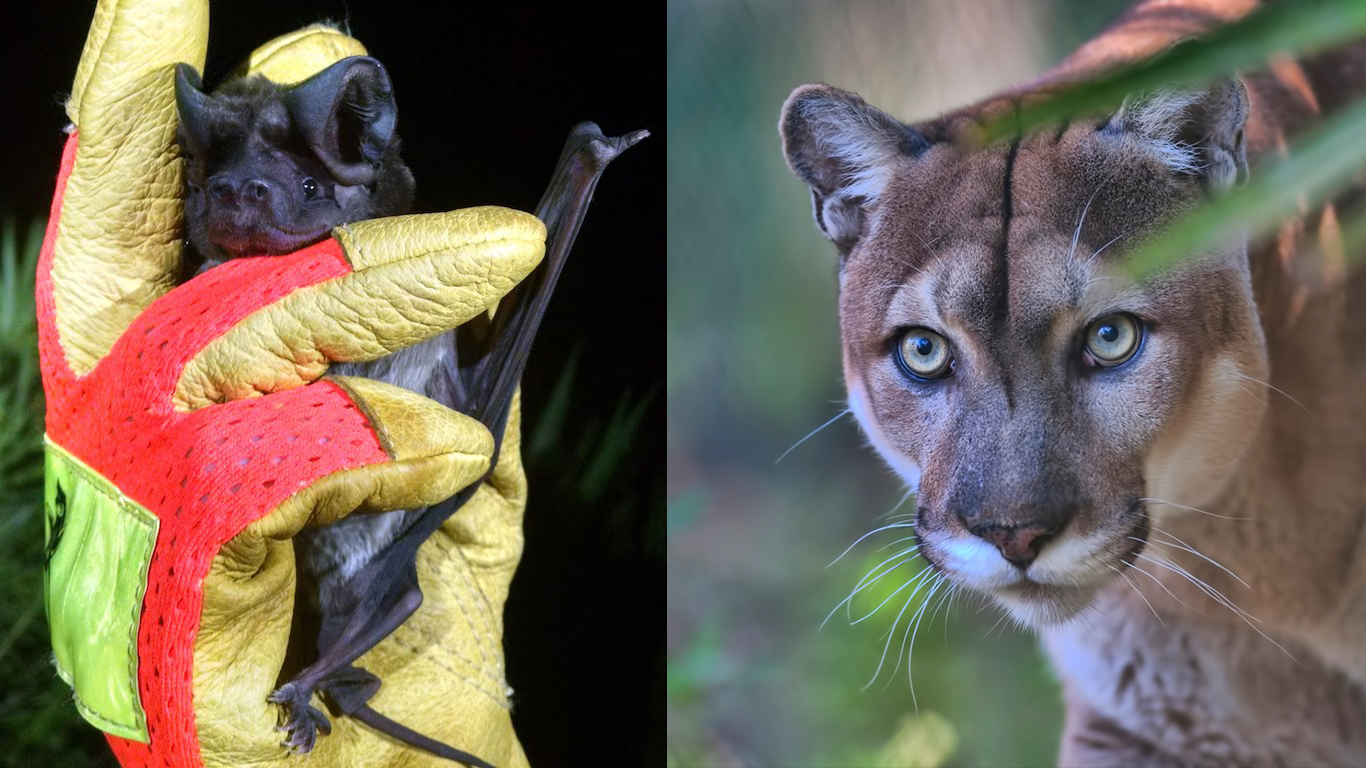
9. Florida
> Selected endangered species: Florida Bonneted Bat (eumops floridanus), Florida Panther (puma concolor coryi)
[in-text-ad-2]
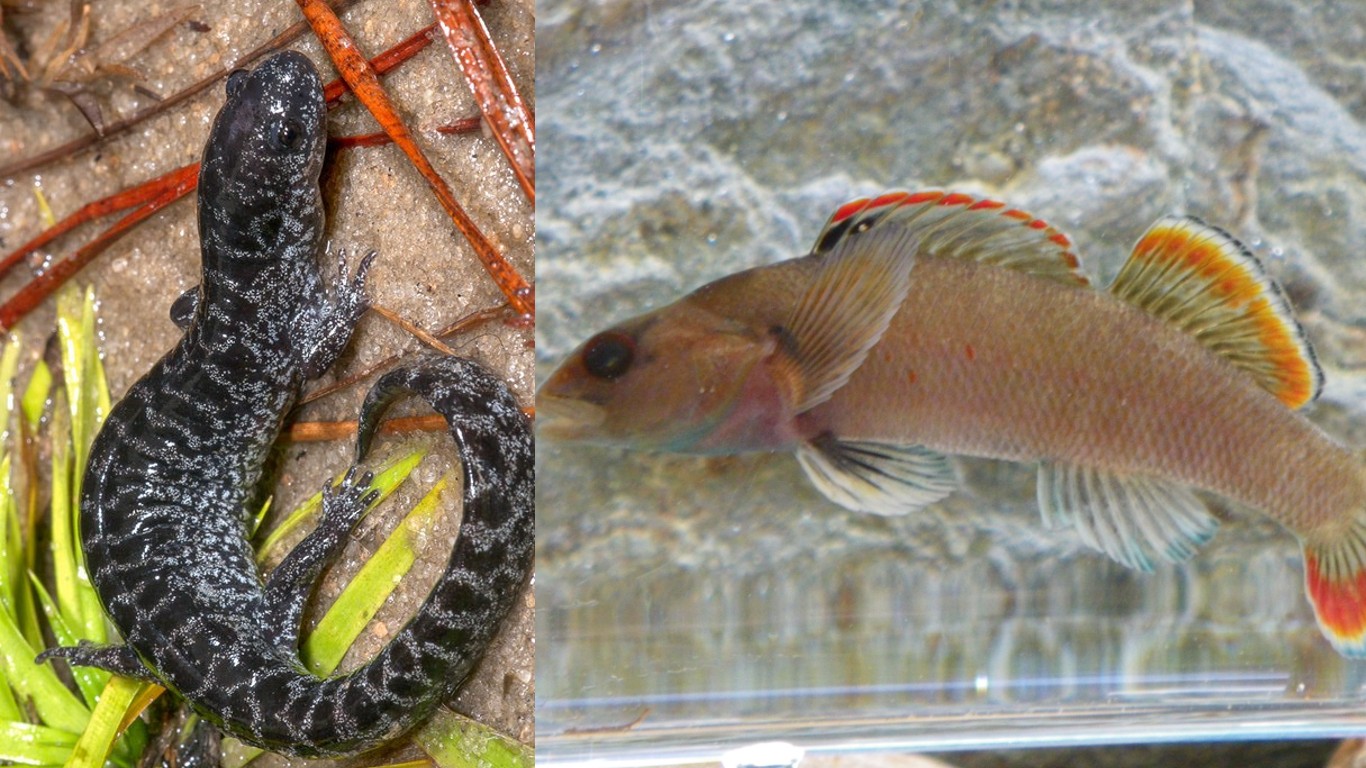
10. Georgia
> Selected endangered species: Etowah Darter (etheostoma etowahae), Reticulated flatwoods salamander (Ambystoma bishopi)
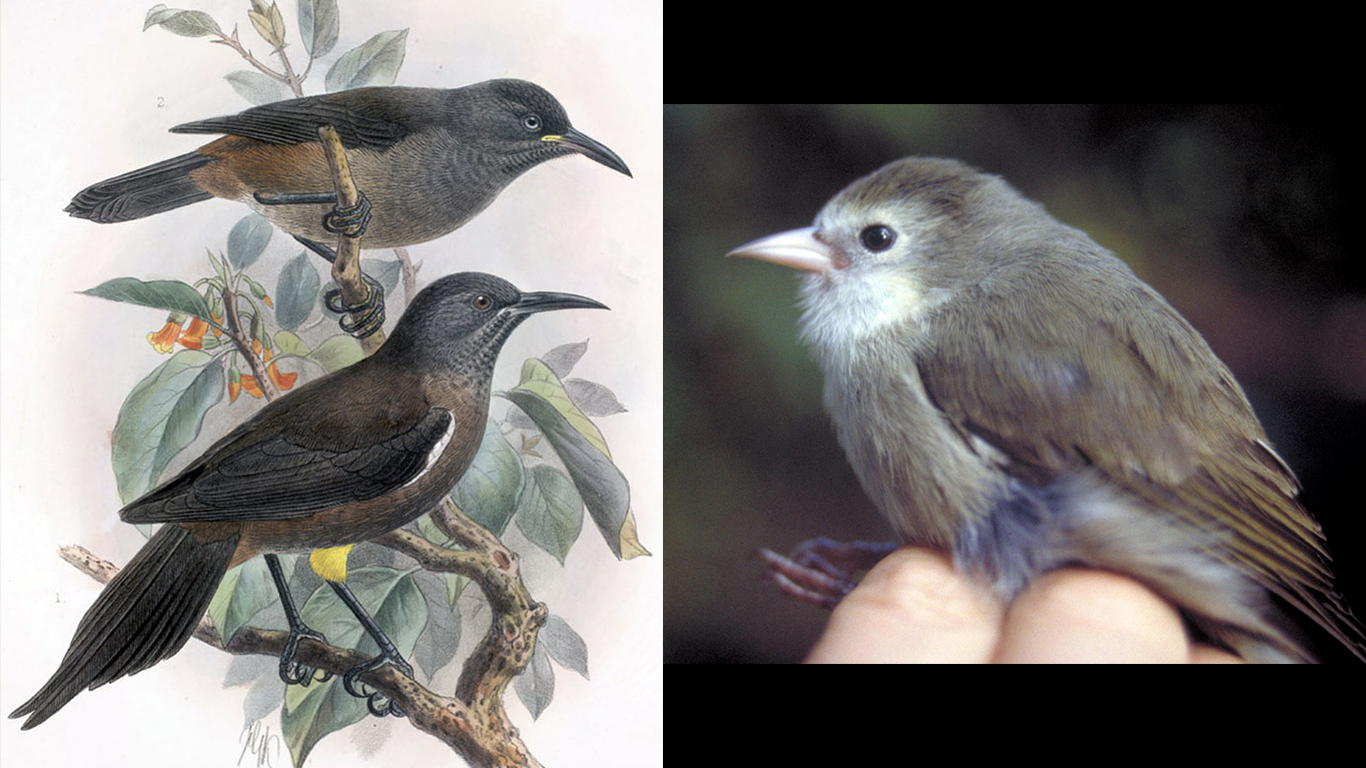
11. Hawaii
> Selected endangered species: Kauai `O`O (moho braccatus), Akikiki (oreomystis bairdi)
[in-text-ad]
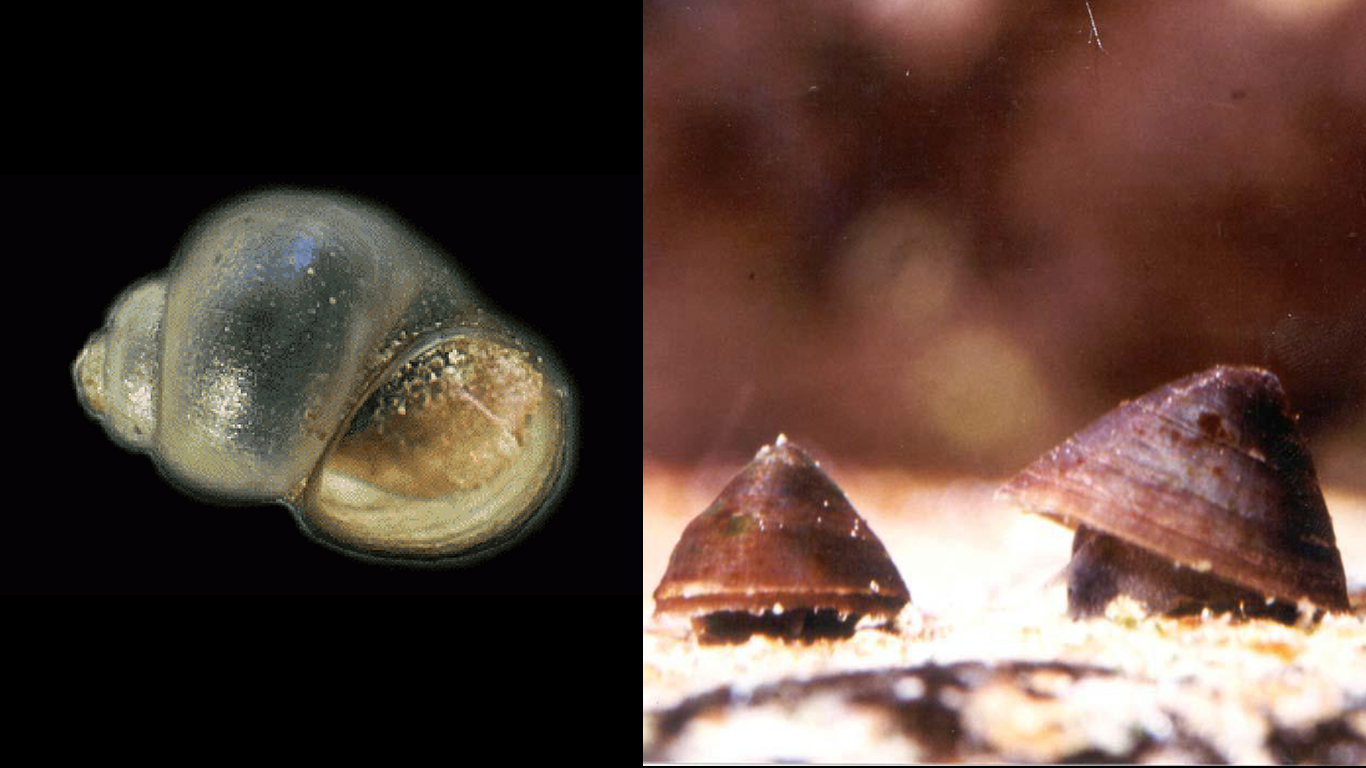
12. Idaho
> Selected endangered species: Banbury Springs Limpet (idaholanx fresti), Bruneau Hot Springsnail (pyrgulopsis bruneauensis)
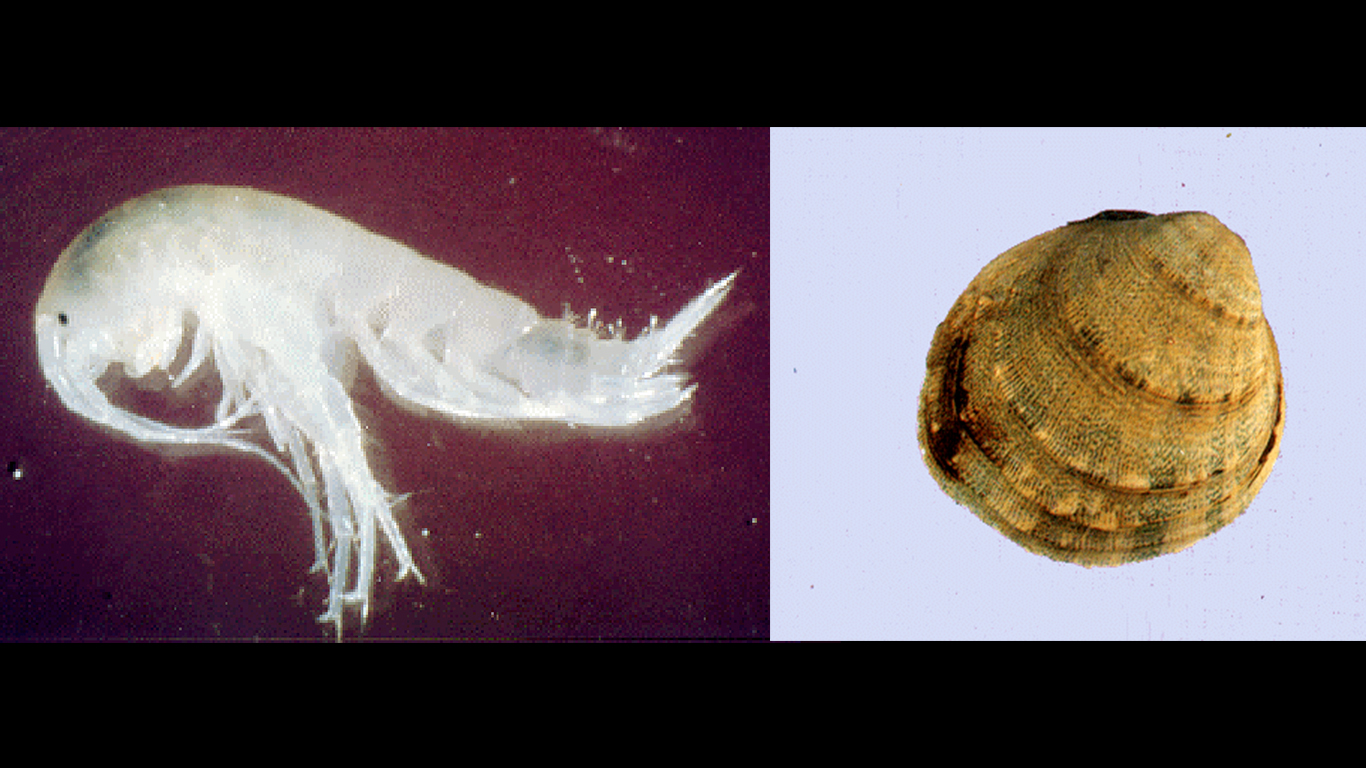
13. Illinois
> Selected endangered species: Illinois Cave Amphipod (gammarus acherondytes), Fanshell (cyprogenia stegaria)
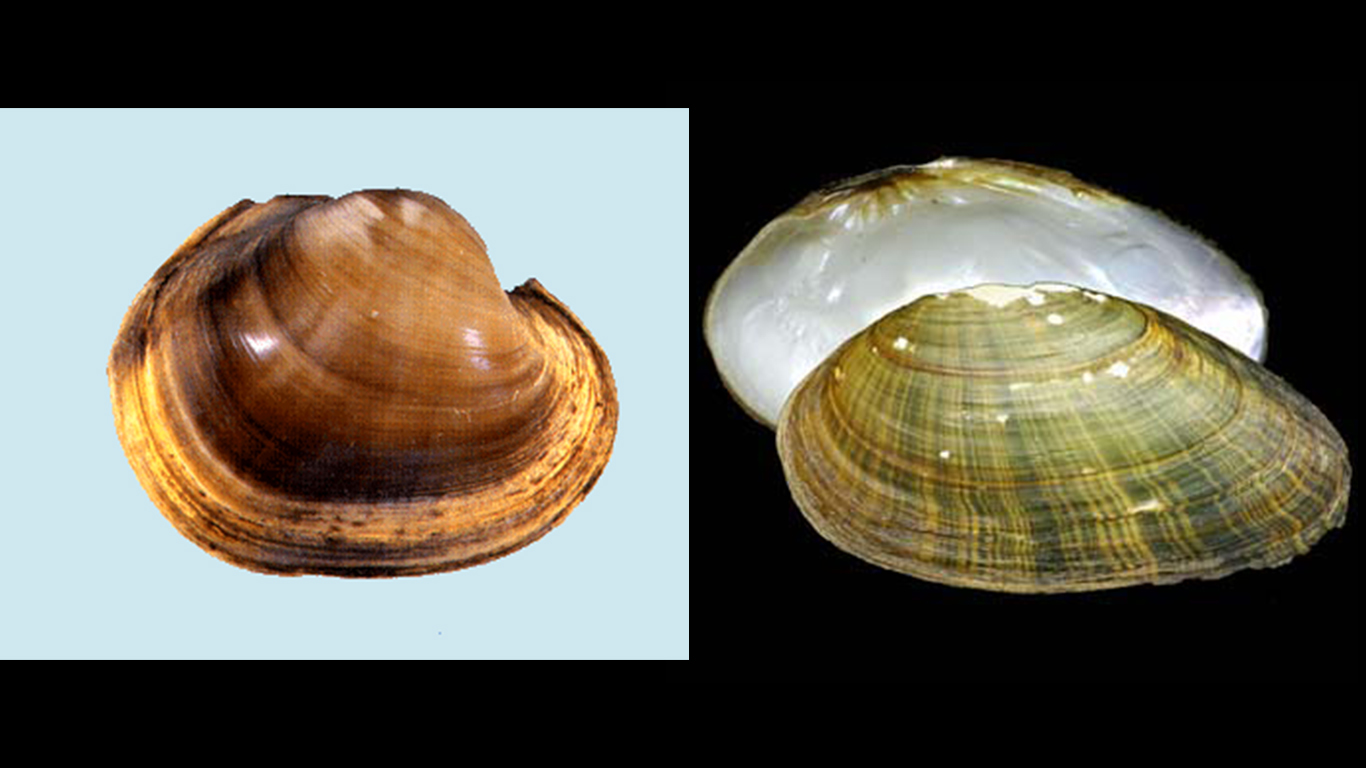
14. Indiana
> Selected endangered species: Fat Pocketbook (potamilus capax), Rayed Bean (villosa fabalis)
[in-text-ad-2]
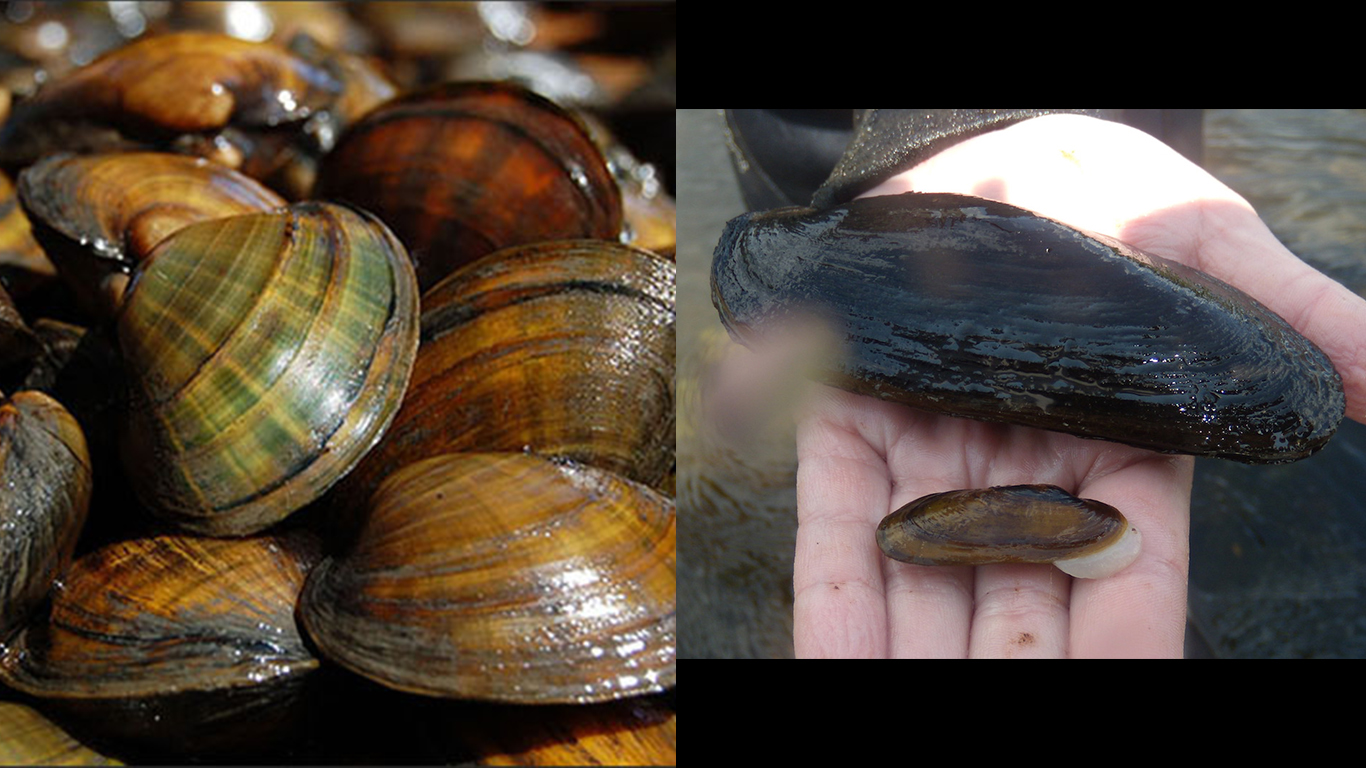
15. Iowa
> Selected endangered species: Spectaclecase (cumberlandia monodonta), Higgins Eye (lampsilis higginsii)
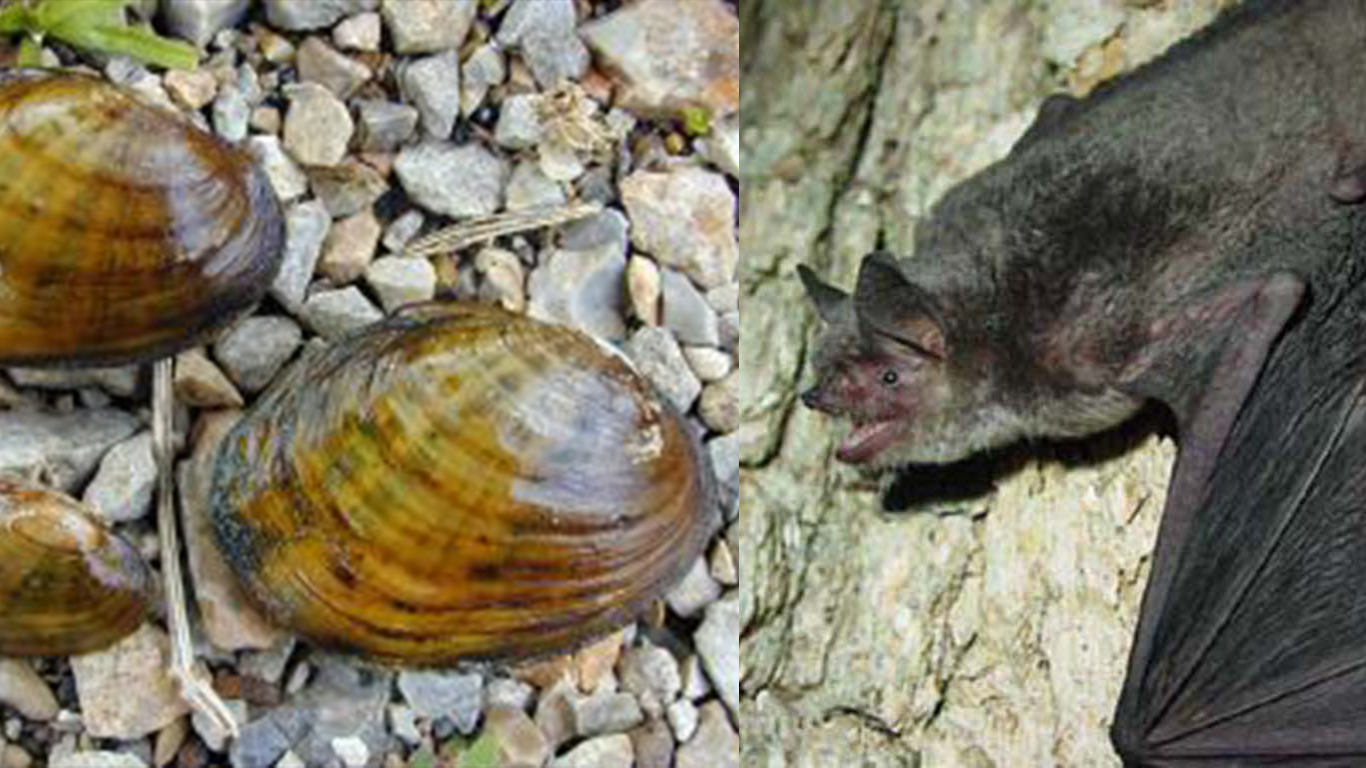
16. Kansas
> Selected endangered species: Gray Bat (myotis grisescens), Neosho Mucket (lampsilis rafinesqueana)
[in-text-ad]
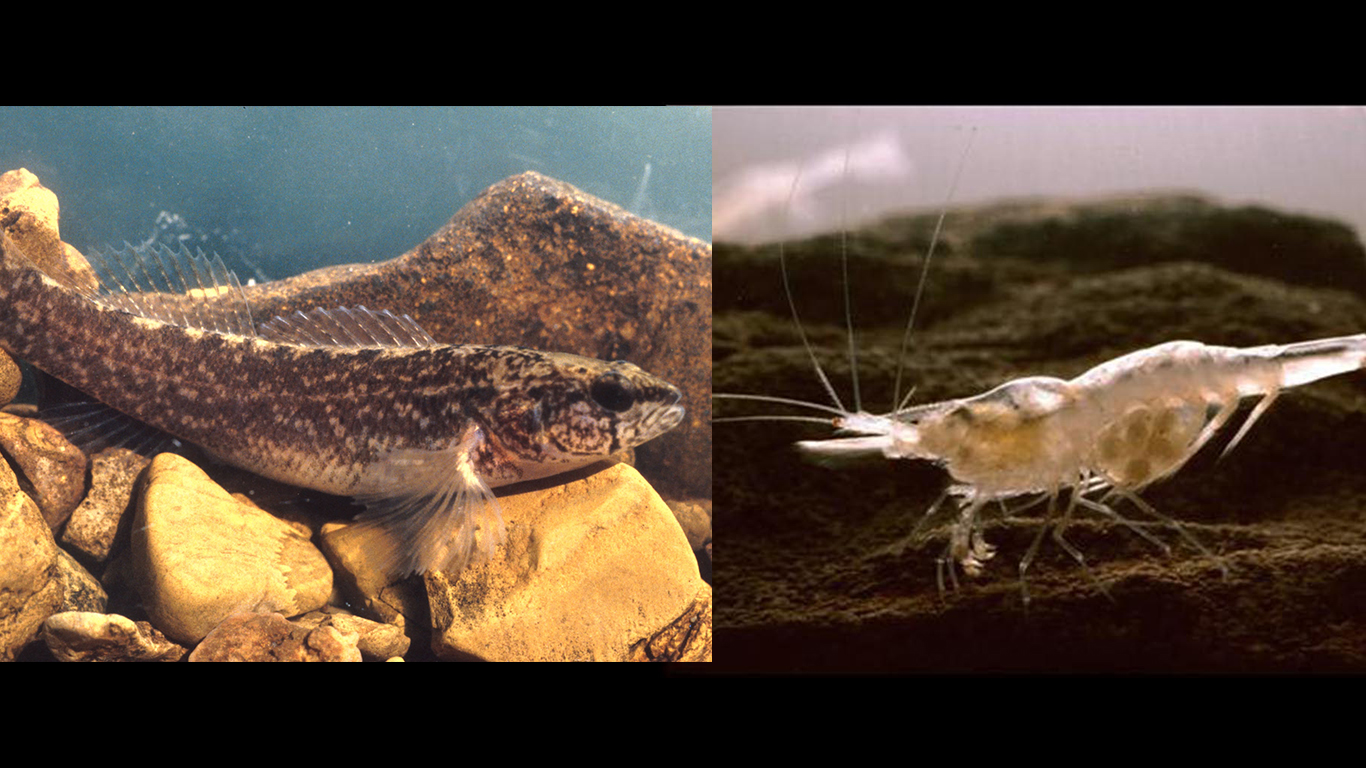
17. Kentucky
> Selected endangered species: Relict Darter (etheostoma chienense), Kentucky Cave Shrimp (palaemonias ganteri)
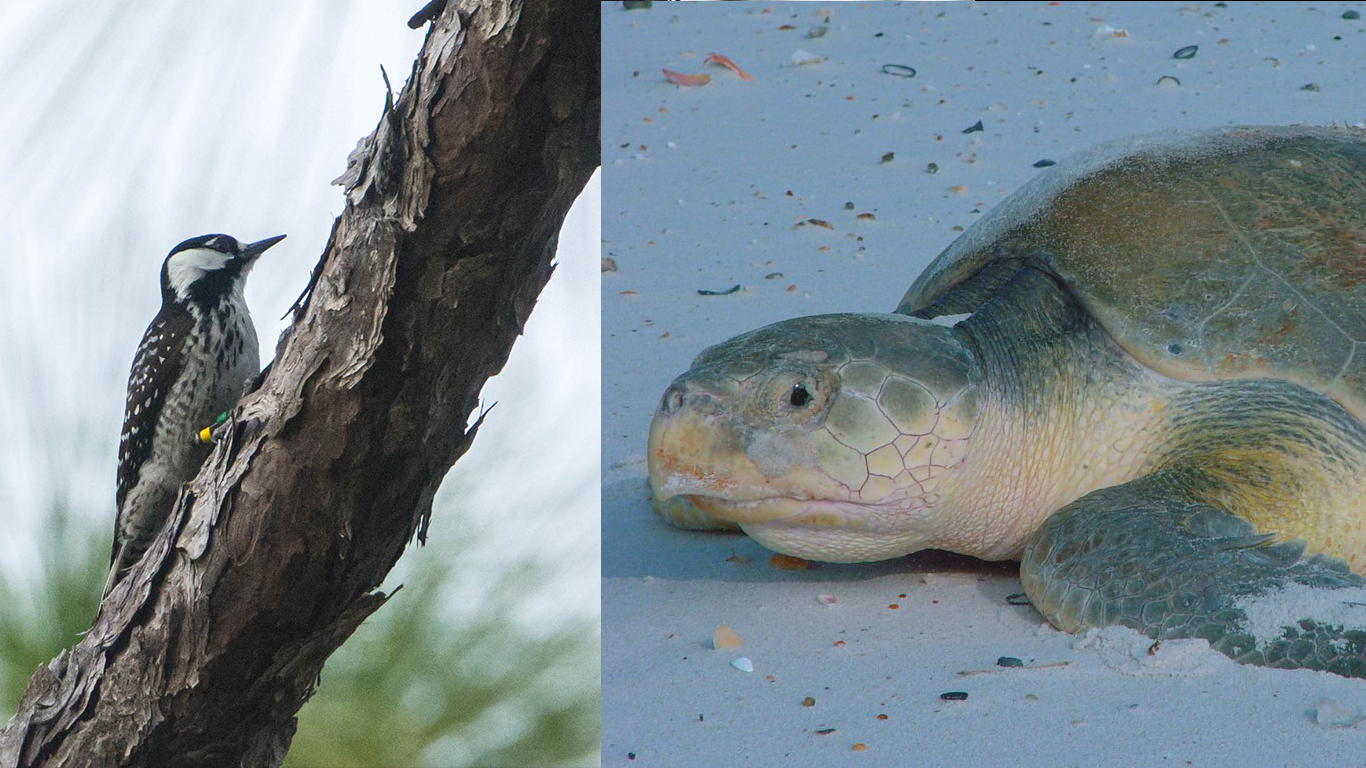
18. Louisiana
> Selected endangered species: Kemp’s Ridley Sea Turtle (lepidochelys kempii), Red-Cockaded Woodpecker (picoides borealis)
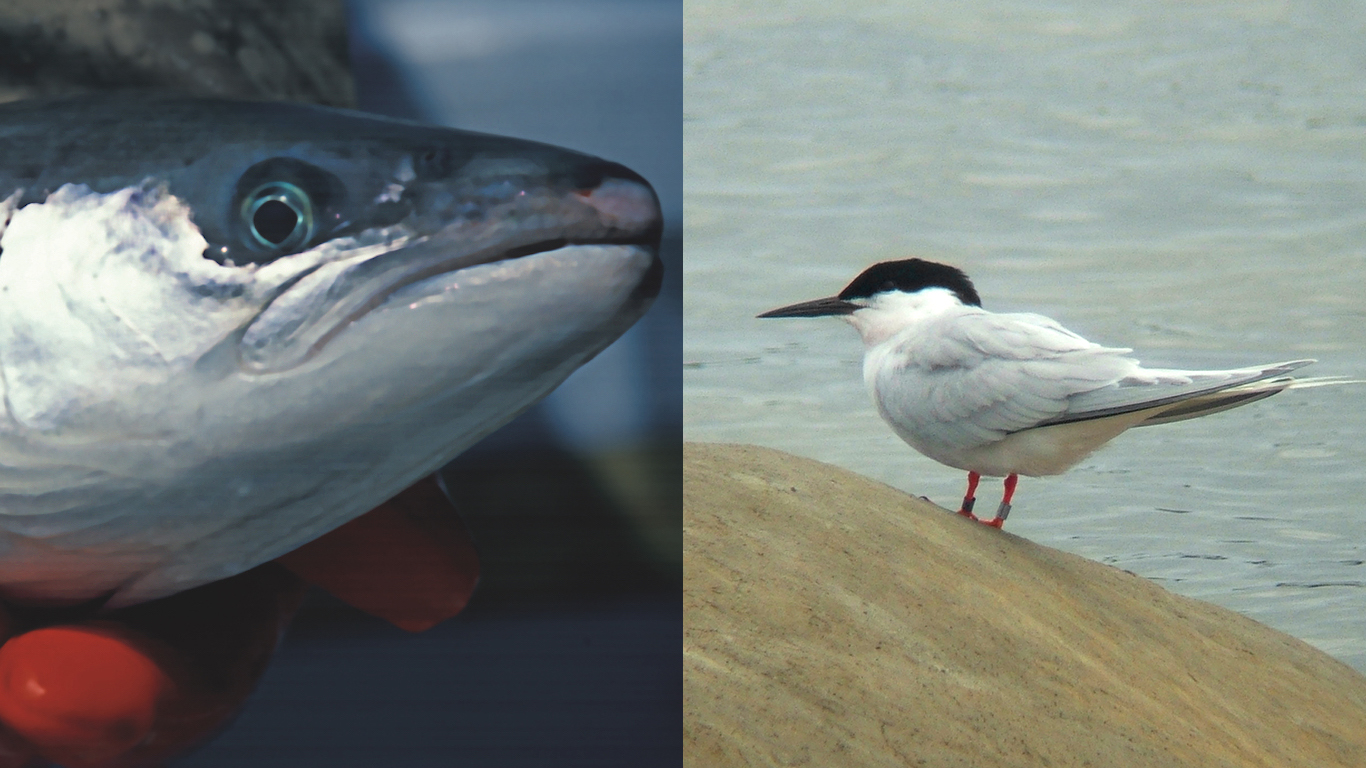
19. Maine
> Selected endangered species: Atlantic Salmon (salmo salar), Roseate Tern (sterna dougallii dougallii)
[in-text-ad-2]
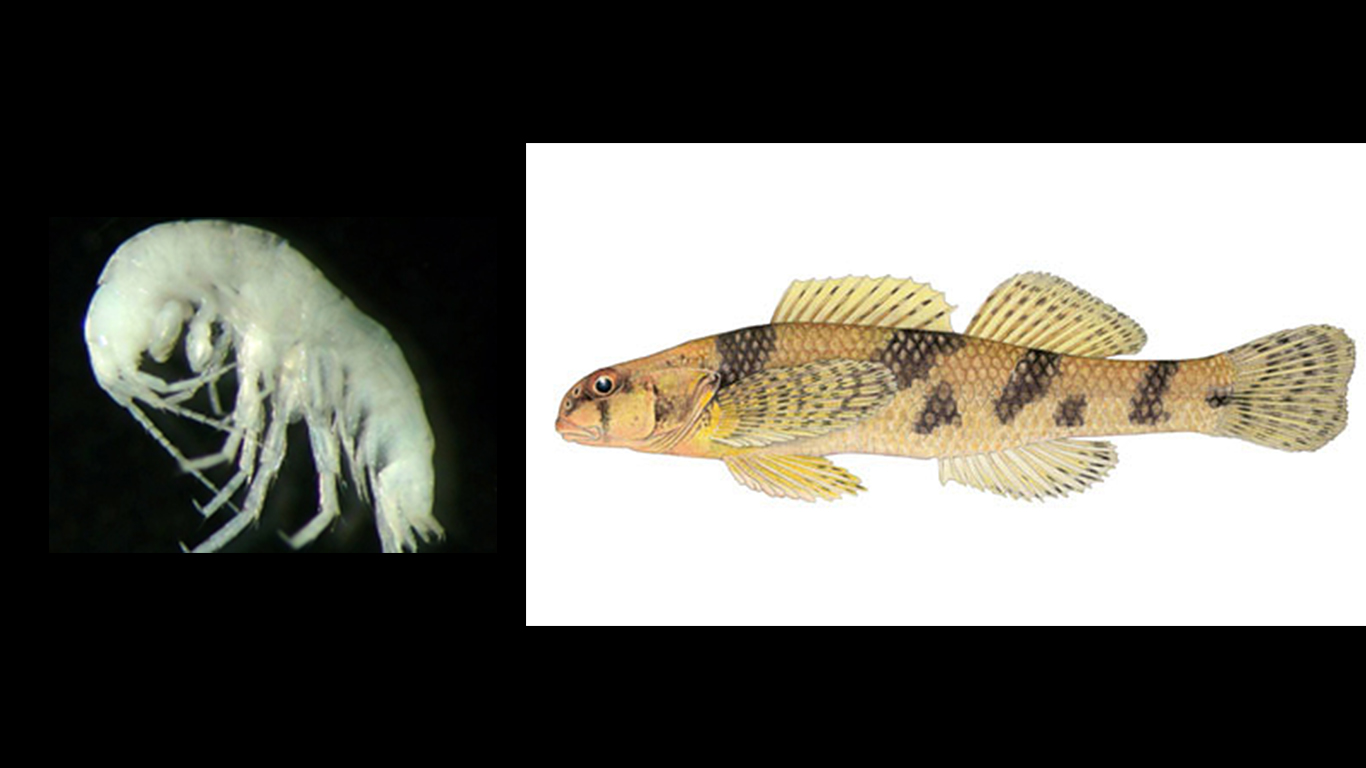
20. Maryland
> Selected endangered species: Hay’s Spring Amphipod (stygobromus hayi), Maryland Darter (etheostoma sellare)
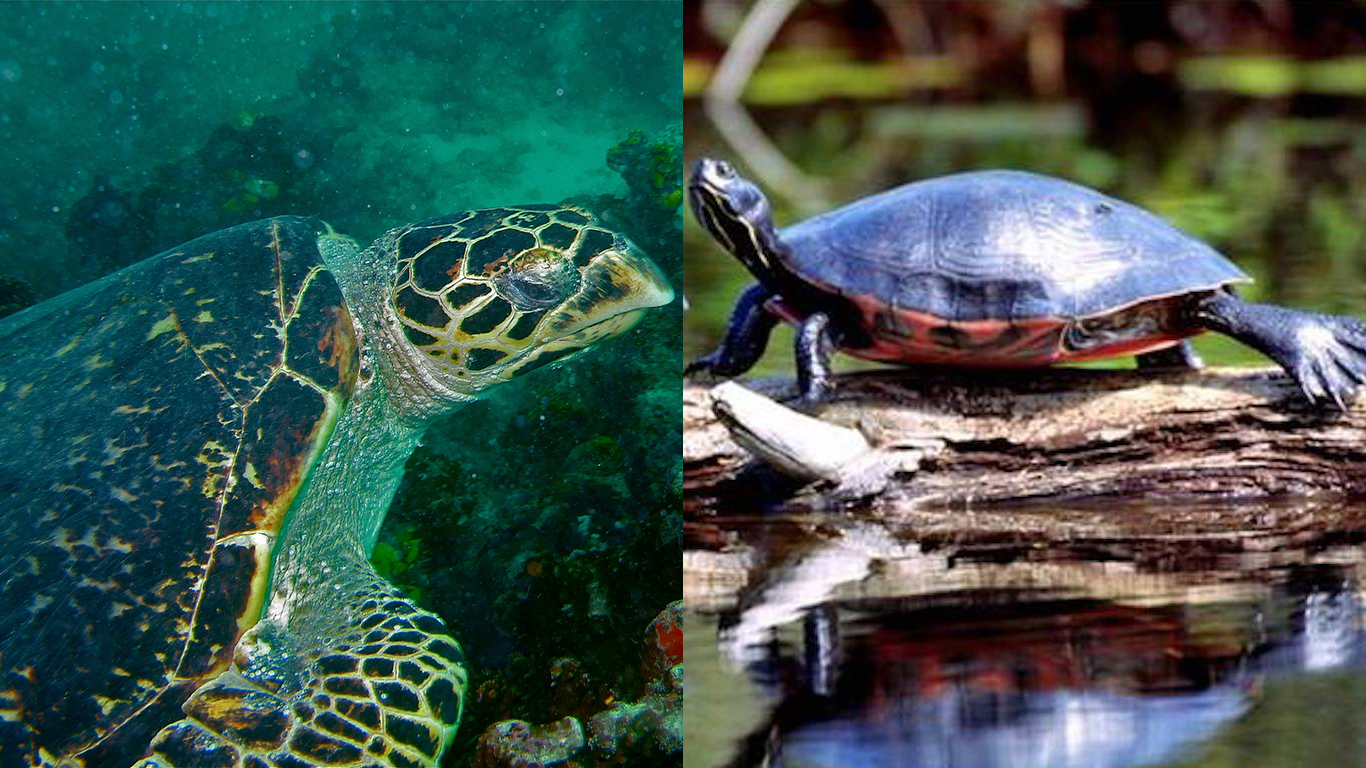
21. Massachusetts
> Selected endangered species: Plymouth Redbelly Turtle (pseudemys rubriventris bangsi), Hawksbill Sea Turtle (eretmochelys imbricata)
[in-text-ad]
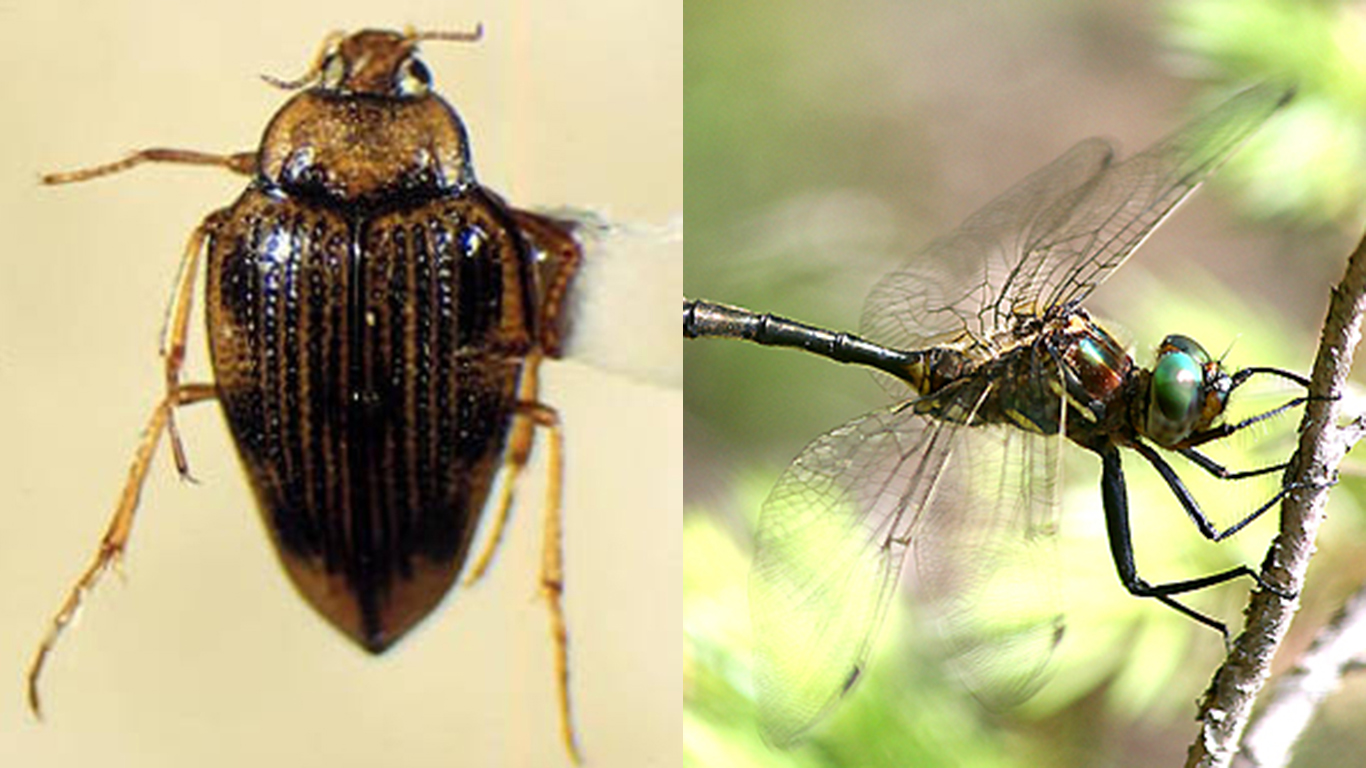
22. Michigan
> Selected endangered species: Hungerford’s Crawling Water Beetle (brychius hungerfordi), Hine’s Emerald Dragonfly (somatochlora hineana)
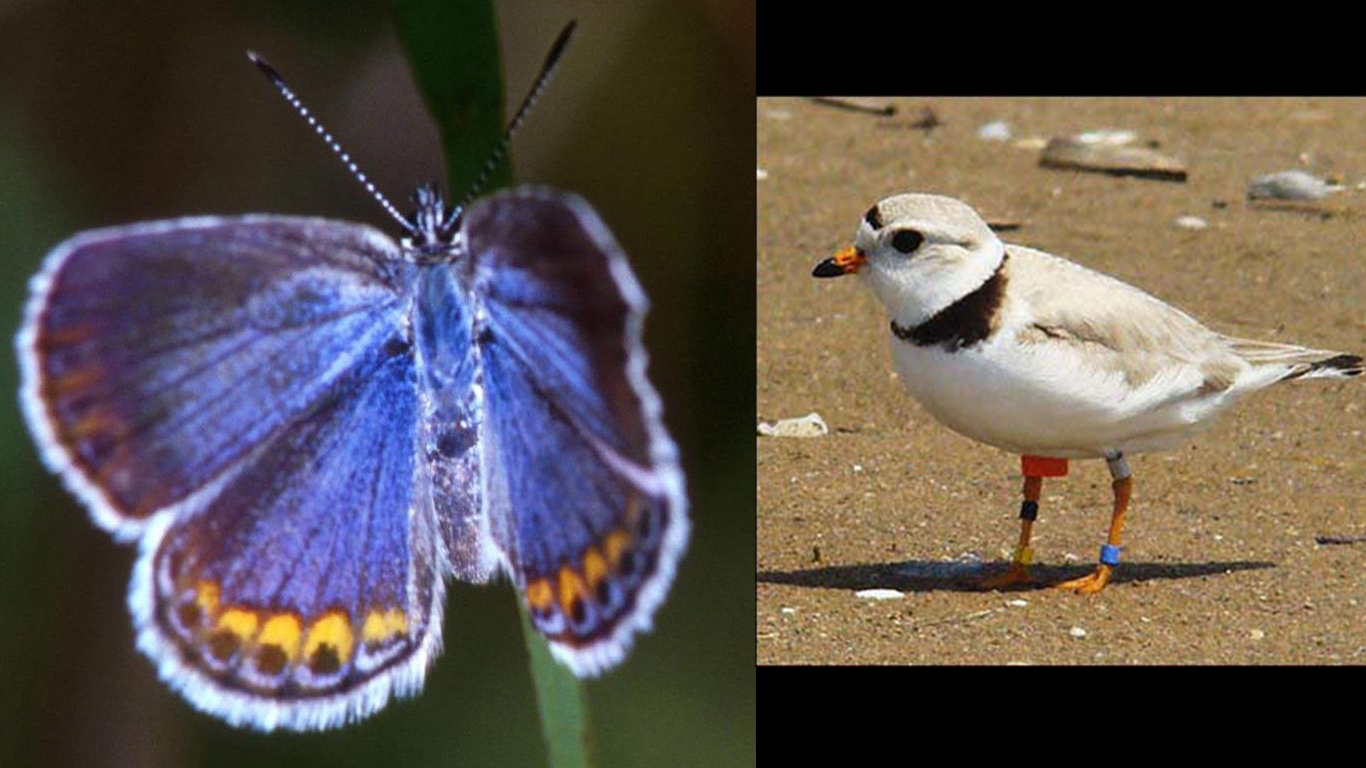
23. Minnesota
> Selected endangered species: Karner Blue Butterfly (lycaeides melissa samuelis), Piping Plover (charadrius melodus)
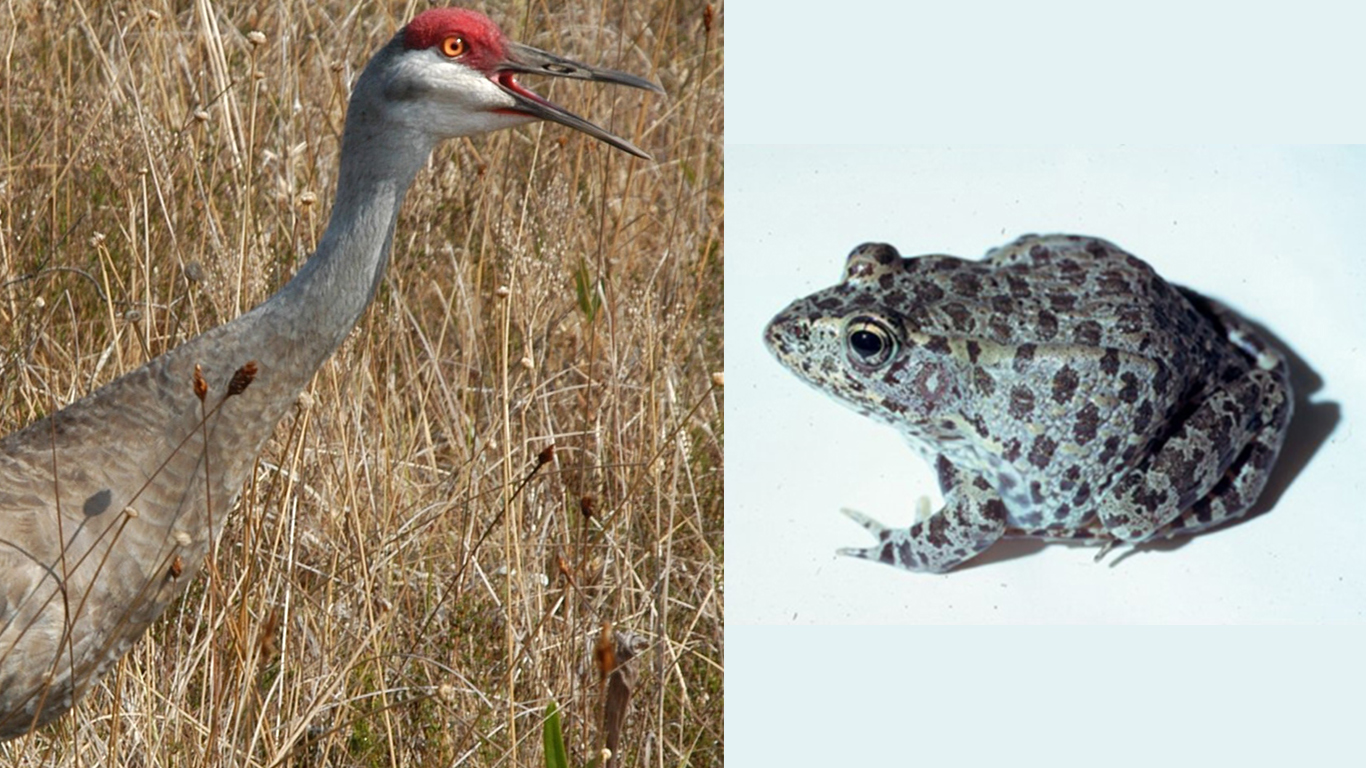
24. Mississippi
> Selected endangered species: Mississippi Sandhill Crane (grus canadensis pulla), Dusky Gopher Frog (rana sevosa)
[in-text-ad-2]
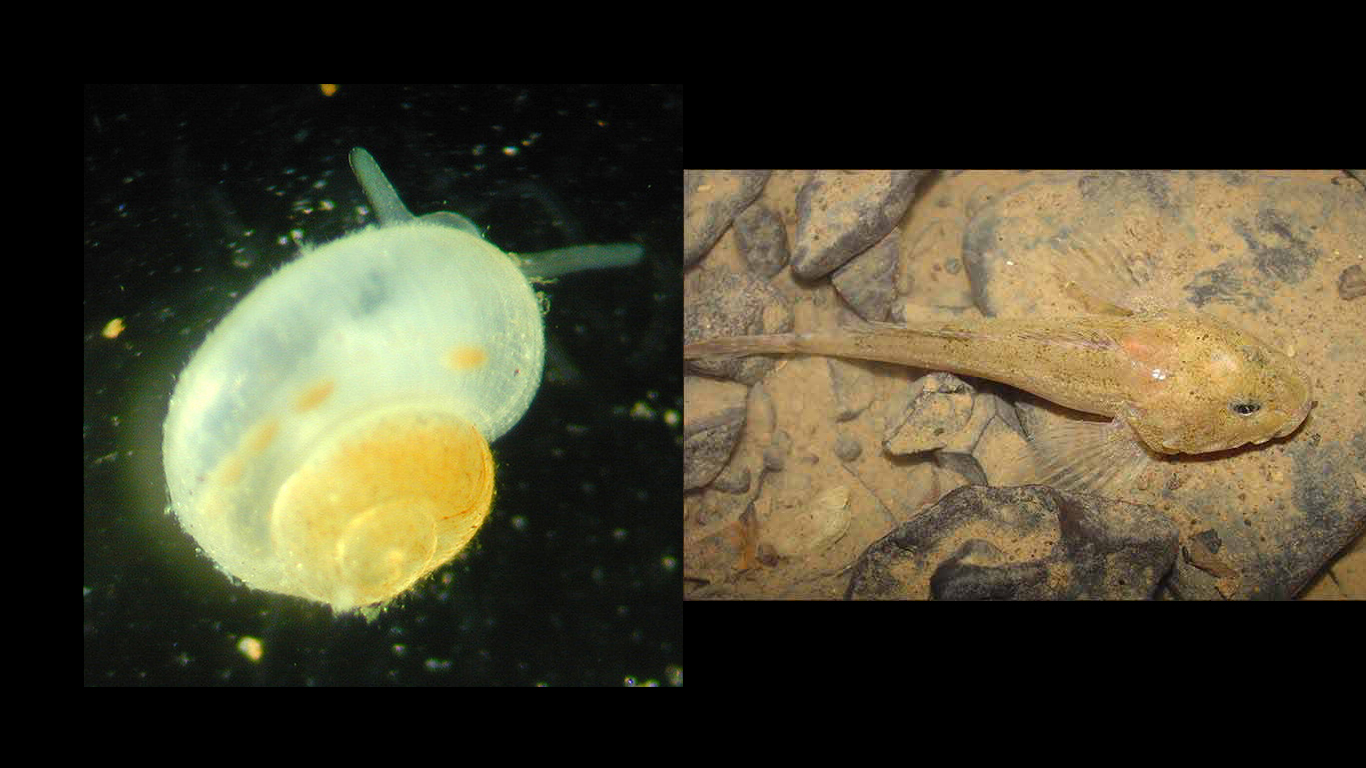
25. Missouri
> Selected endangered species: Tumbling Creek Cavesnail (antrobia culveri), Grotto Sculpin (cottus specus)
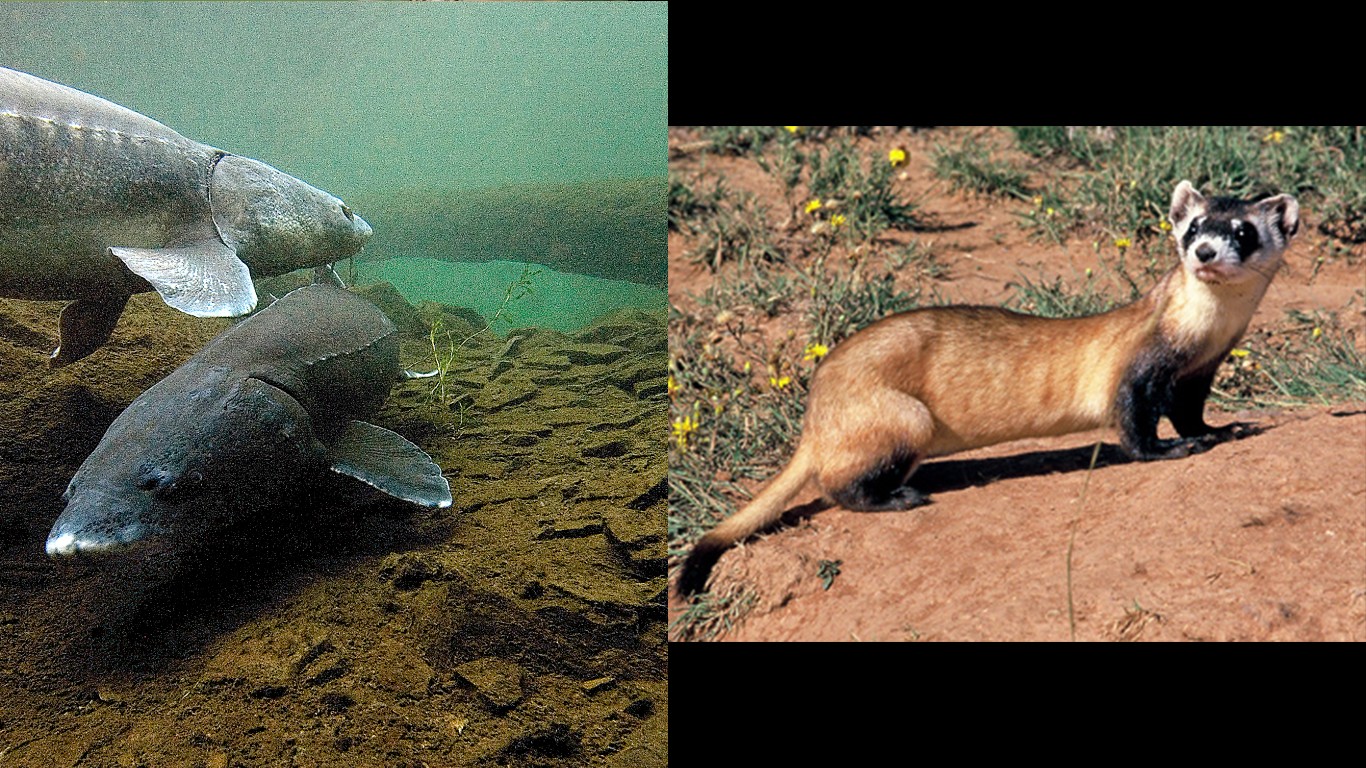
26. Montana
> Selected endangered species: White sturgeon (Acipenser transmontanus), Black-Footed Ferret (mustela nigripes)
[in-text-ad]
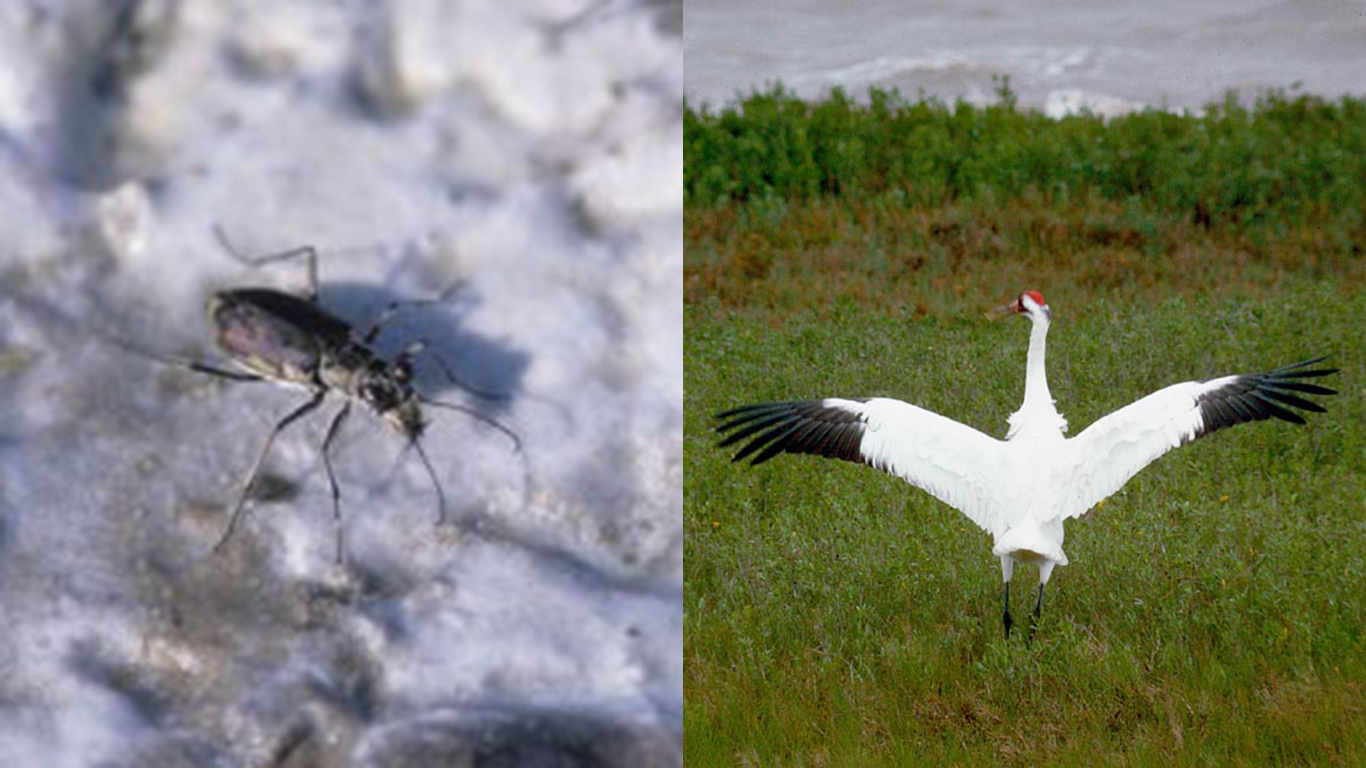
27. Nebraska
> Selected endangered species: Salt Creek Tiger Beetle (cicindela nevadica lincolniana), Whooping Crane (grus americana)
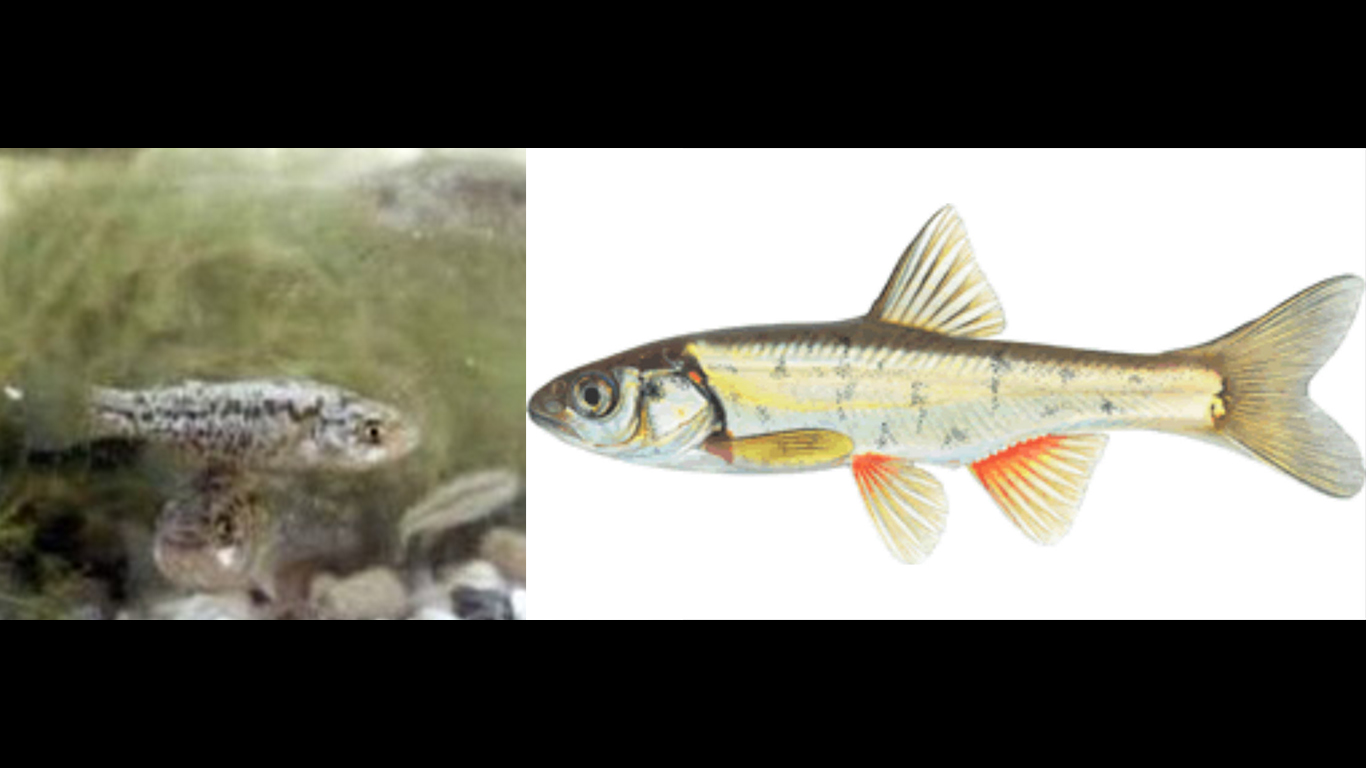
28. Nevada
> Selected endangered species: White River Spinedace (lepidomeda albivallis), Pahrump Poolfish (empetrichthys latos)
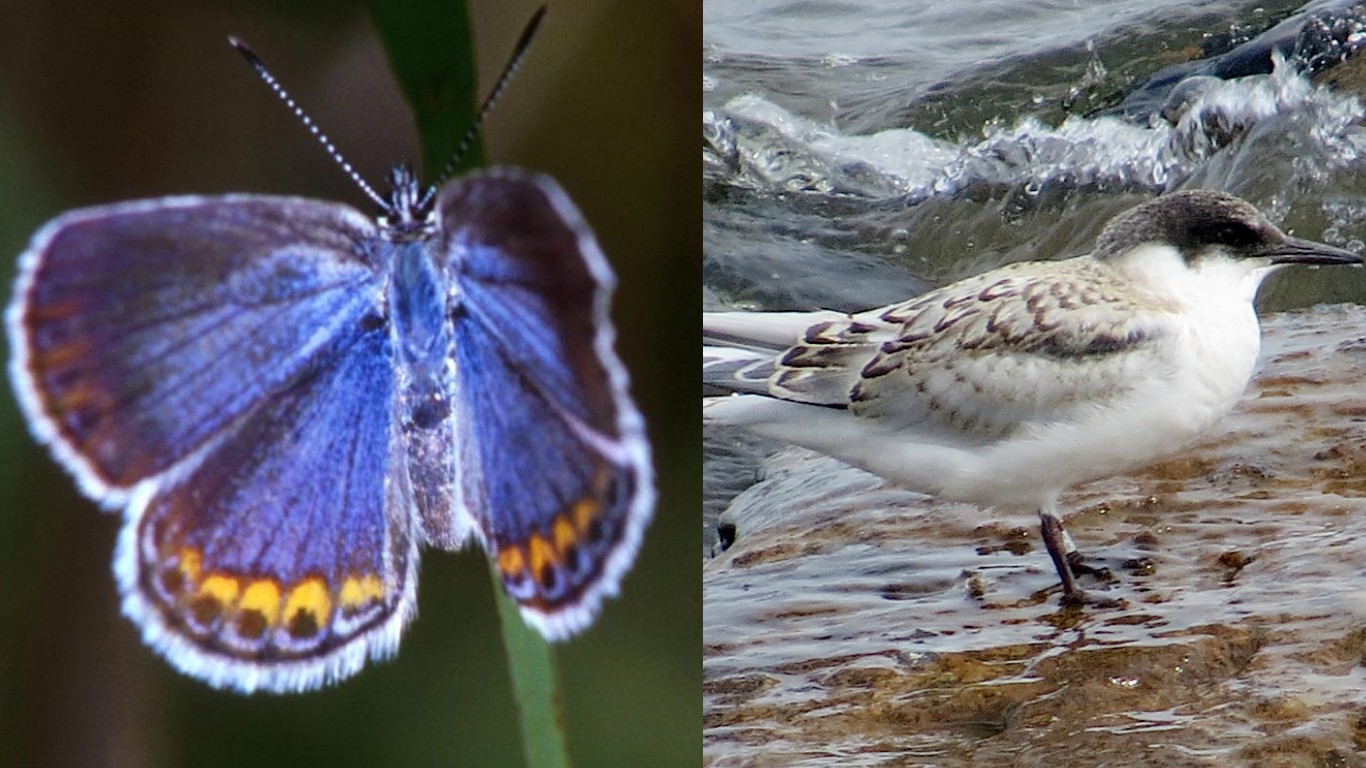
29. New Hampshire
> Selected endangered species: Roseate Tern (Sterna dougallii dougallii), Karner blue butterfly (Lycaeides melissa samuelis)
[in-text-ad-2]
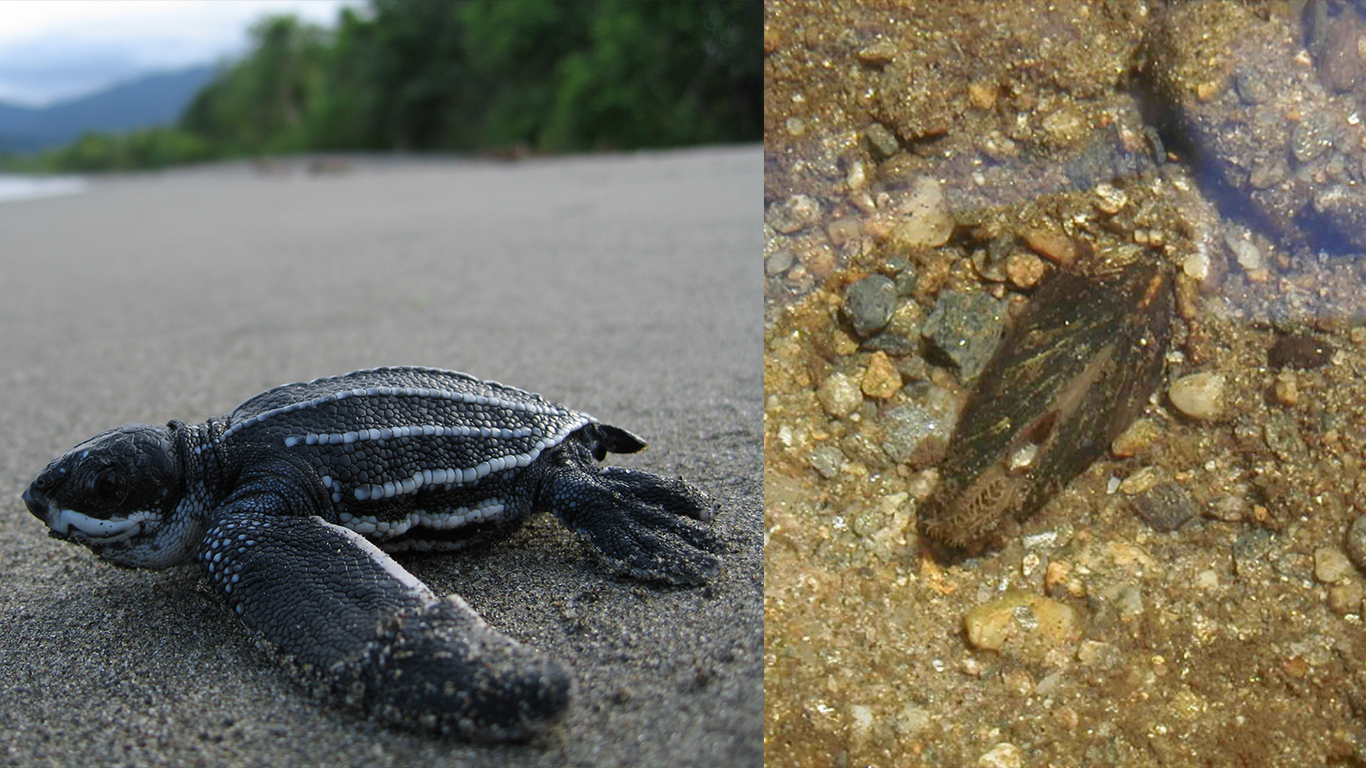
30. New Jersey
> Selected endangered species: Leatherback Sea Turtle (ermochelys coriacea), Dwarf Wedgemussel (alasmidonta heterodon)
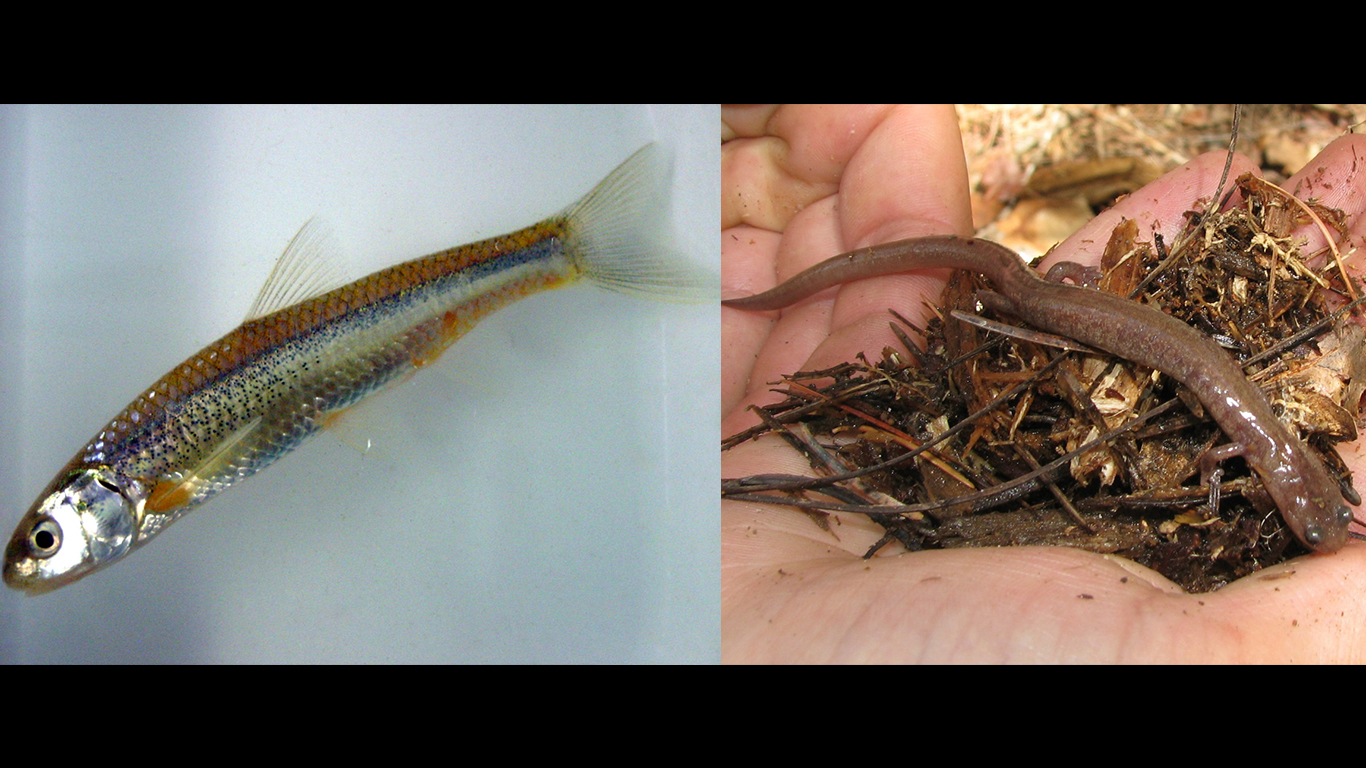
31. New Mexico
> Selected endangered species: Rio Grande Silvery Minnow (hybognathus amarus), Jemez Mountains Salamander (plethodon neomexicanus)
[in-text-ad]
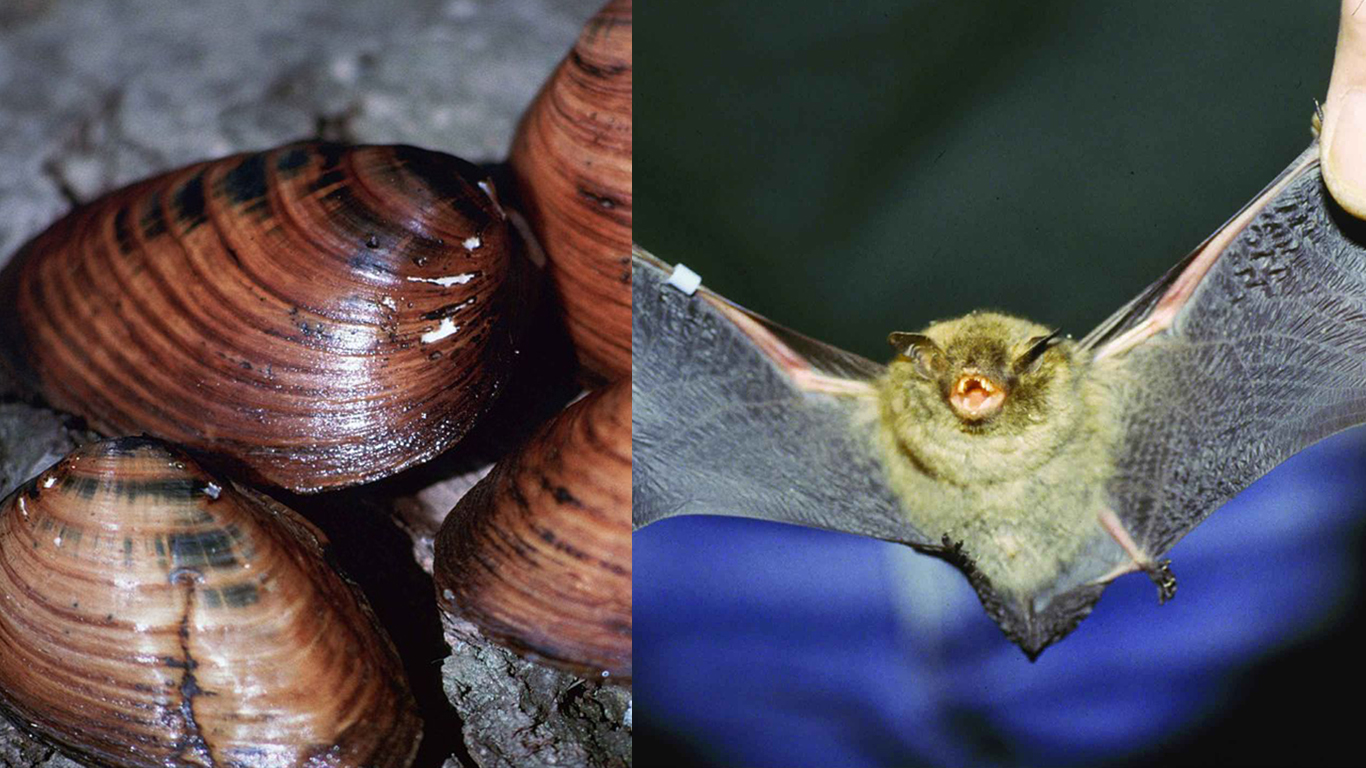
32. New York
> Selected endangered species: Clubshell (pleurobema clava), Indiana Bat (myotis sodalis)
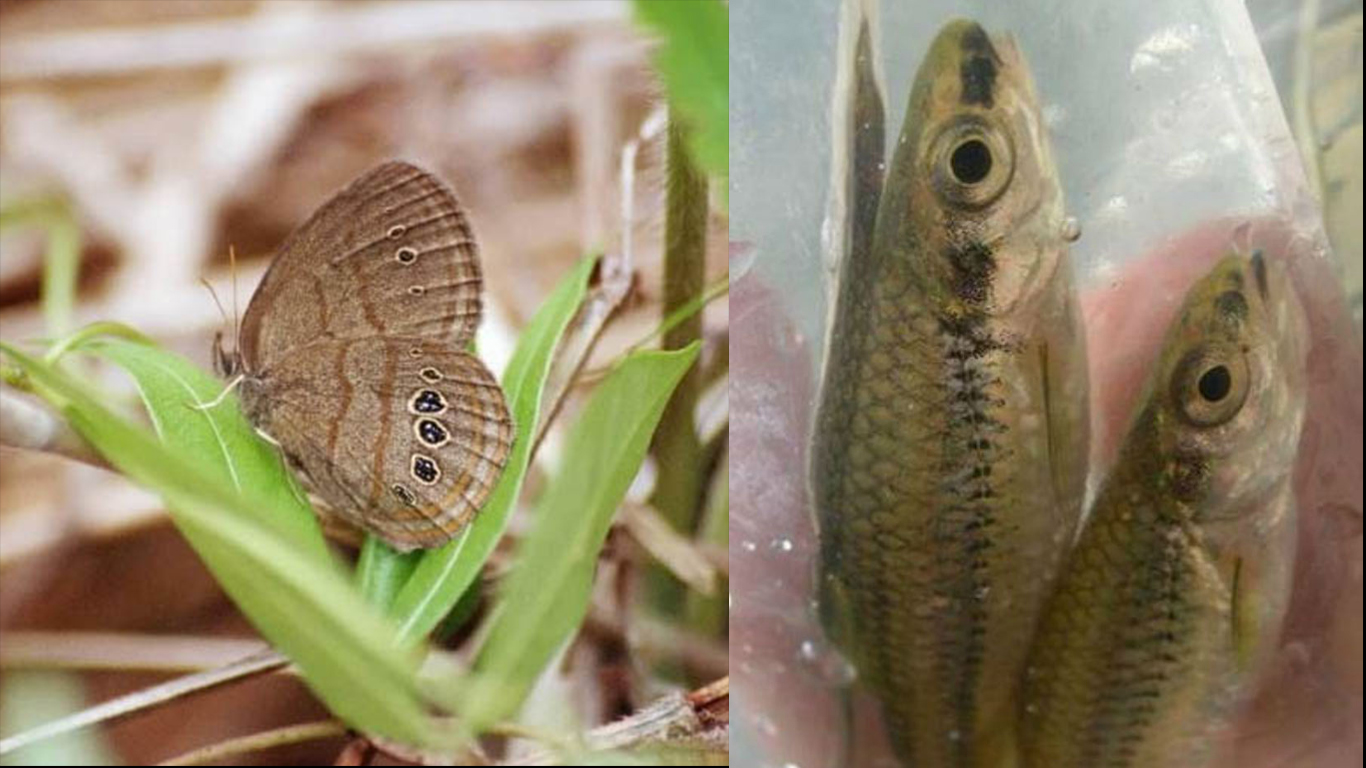
33. North Carolina
> Selected endangered species: Saint Francis’ Satyr Butterfly (neonympha mitchellii francisci), Cape Fear Shiner (notropis mekistocholas)
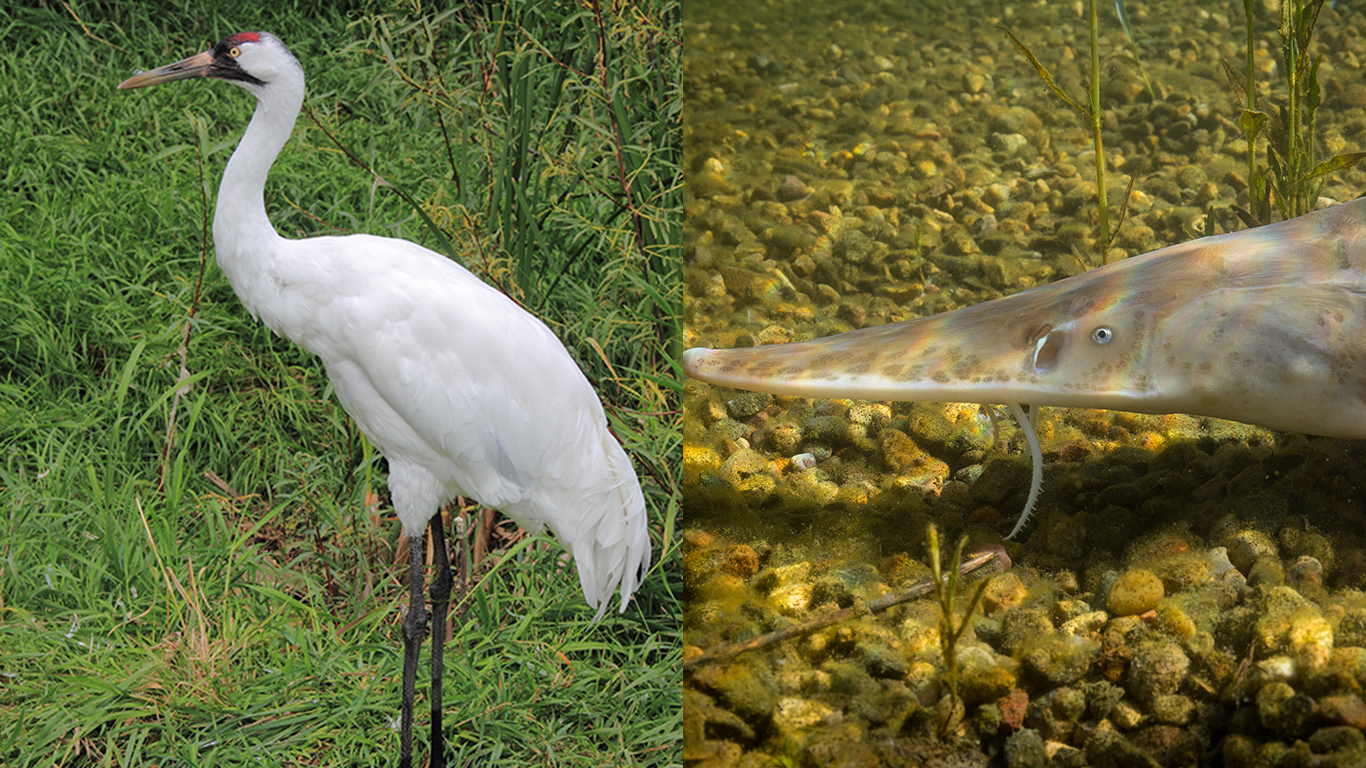
34. North Dakota
> Selected endangered species: Whooping Crane (grus americana), Pallid Sturgeon (scaphirhynchus albus)
[in-text-ad-2]
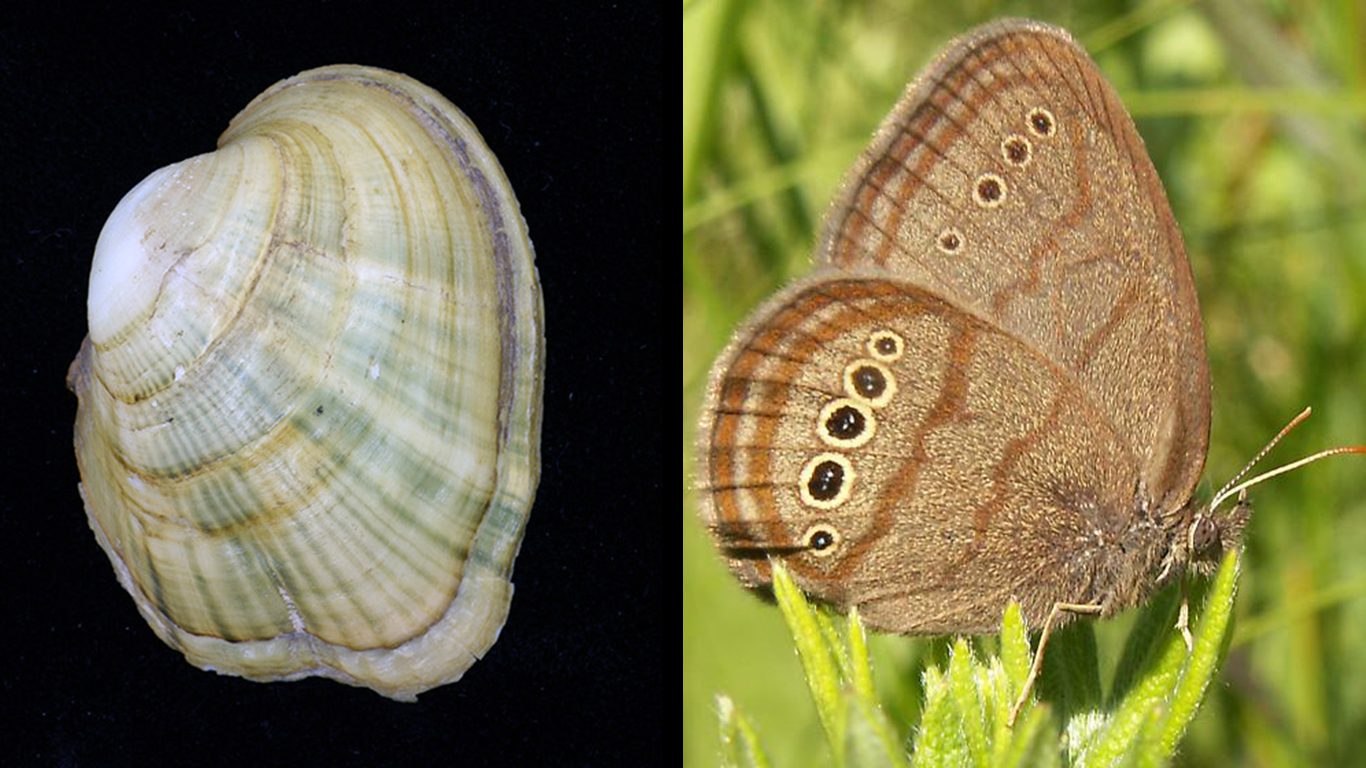
35. Ohio
> Selected endangered species: White Cat’s Paw (epioblasma obliquata perobliqua), Mitchell’s Satyr Butterfly (neonympha mitchellii mitchellii)
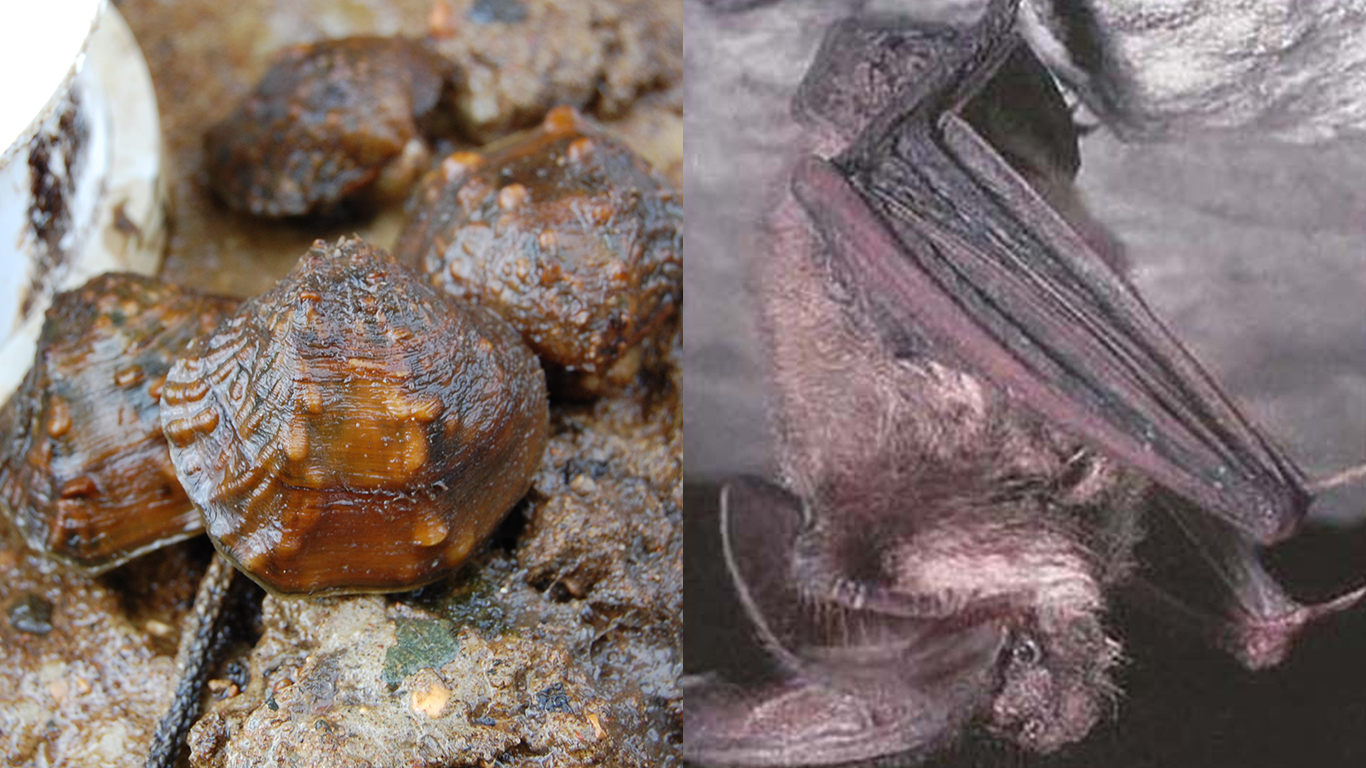
36. Oklahoma
> Selected endangered species: Ozark Big-Eared Bat (corynorhinus townsendii ingens), Winged Mapleleaf (quadrula fragosa)
[in-text-ad]
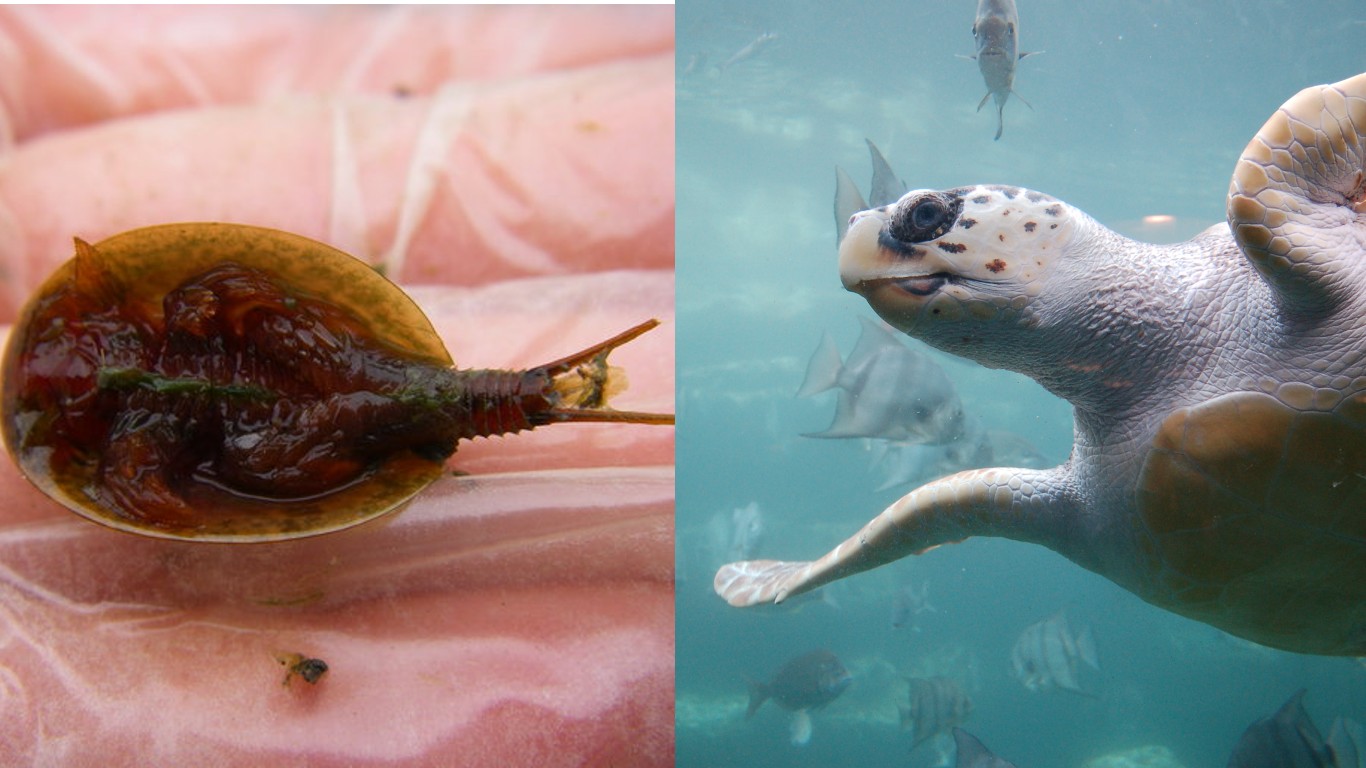
37. Oregon
> Selected endangered species: Vernal pool tadpole shrimp (Lepidurus packardi), Loggerhead Sea Turtle (caretta caretta)
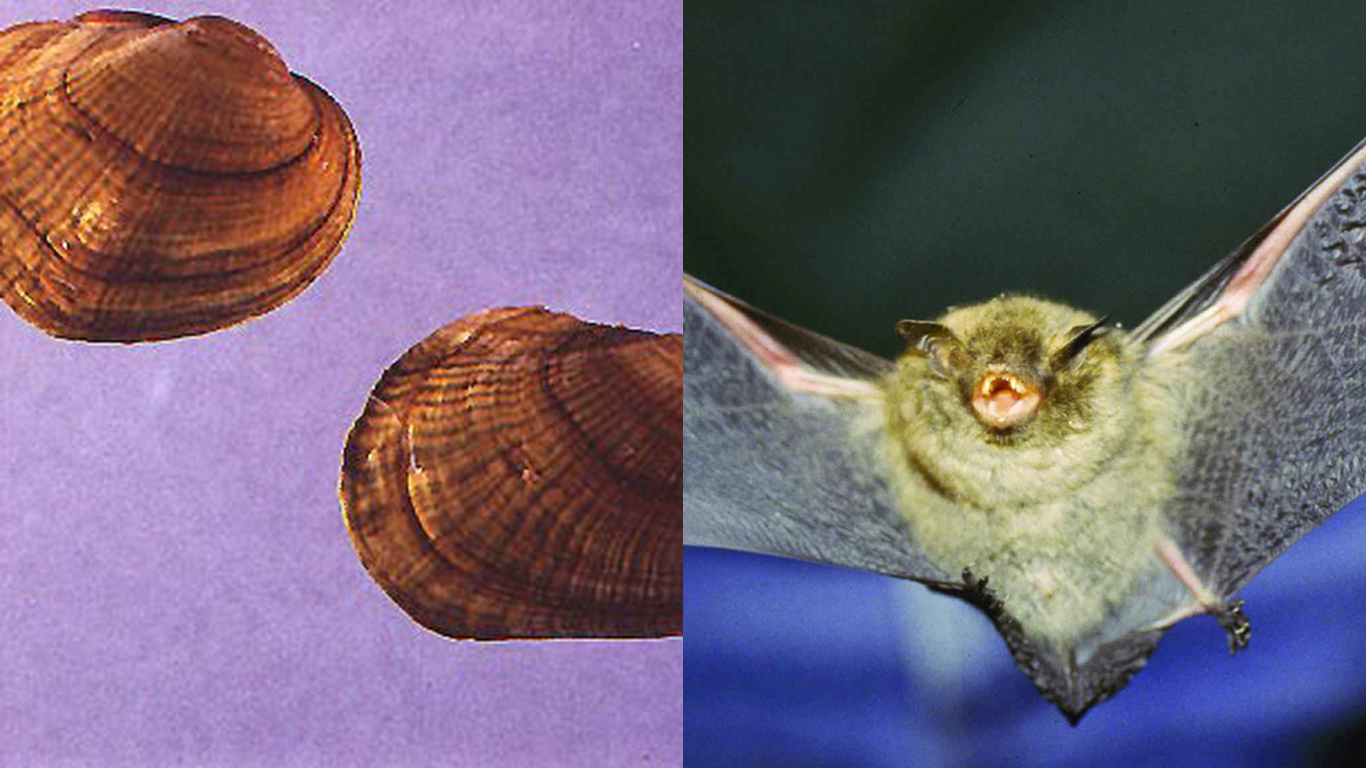
38. Pennsylvania
> Selected endangered species: Indiana Bat (myotis sodalis), Northern Riffleshell (epioblasma torulosa rangiana)
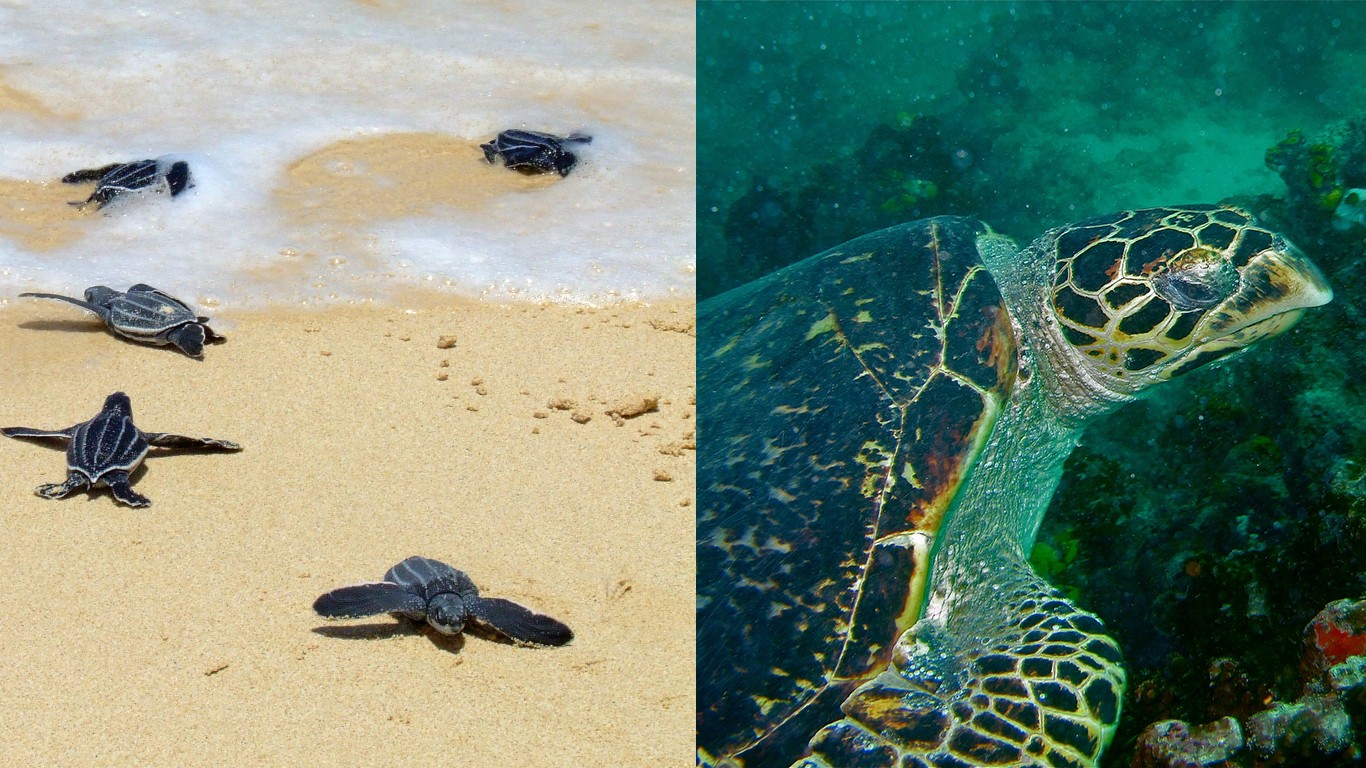
39. Rhode Island
> Selected endangered species: Leatherback sea turtle (Dermochelys coriacea), Hawksbill Sea Turtle (eretmochelys imbricata)
[in-text-ad-2]
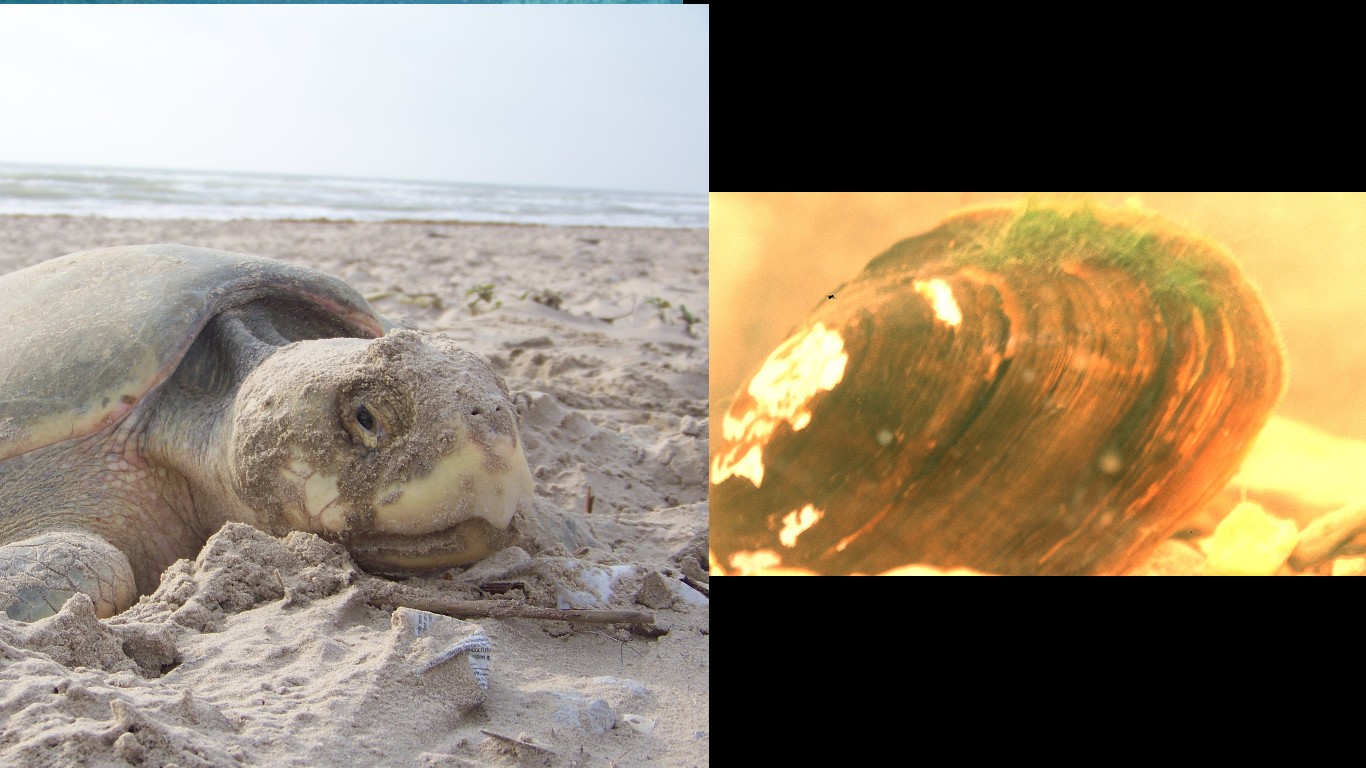
40. South Carolina
> Selected endangered species: Carolina Heelsplitter (lasmigona decorata), Kemp’s ridley sea turtle (Lepidochelys kempii)
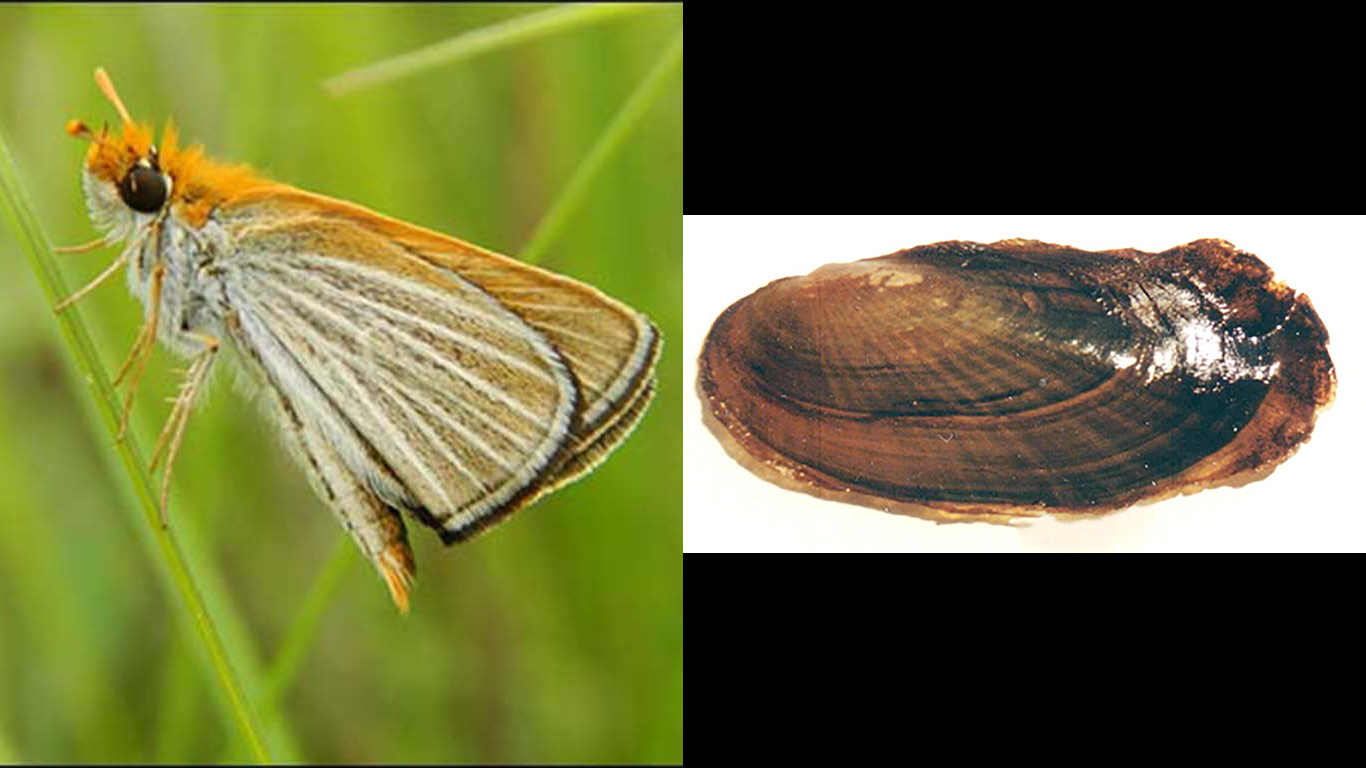
41. South Dakota
> Selected endangered species: Poweshiek Skipperling (oarisma poweshiek), Scaleshell Mussel (leptodea leptodon)
[in-text-ad]
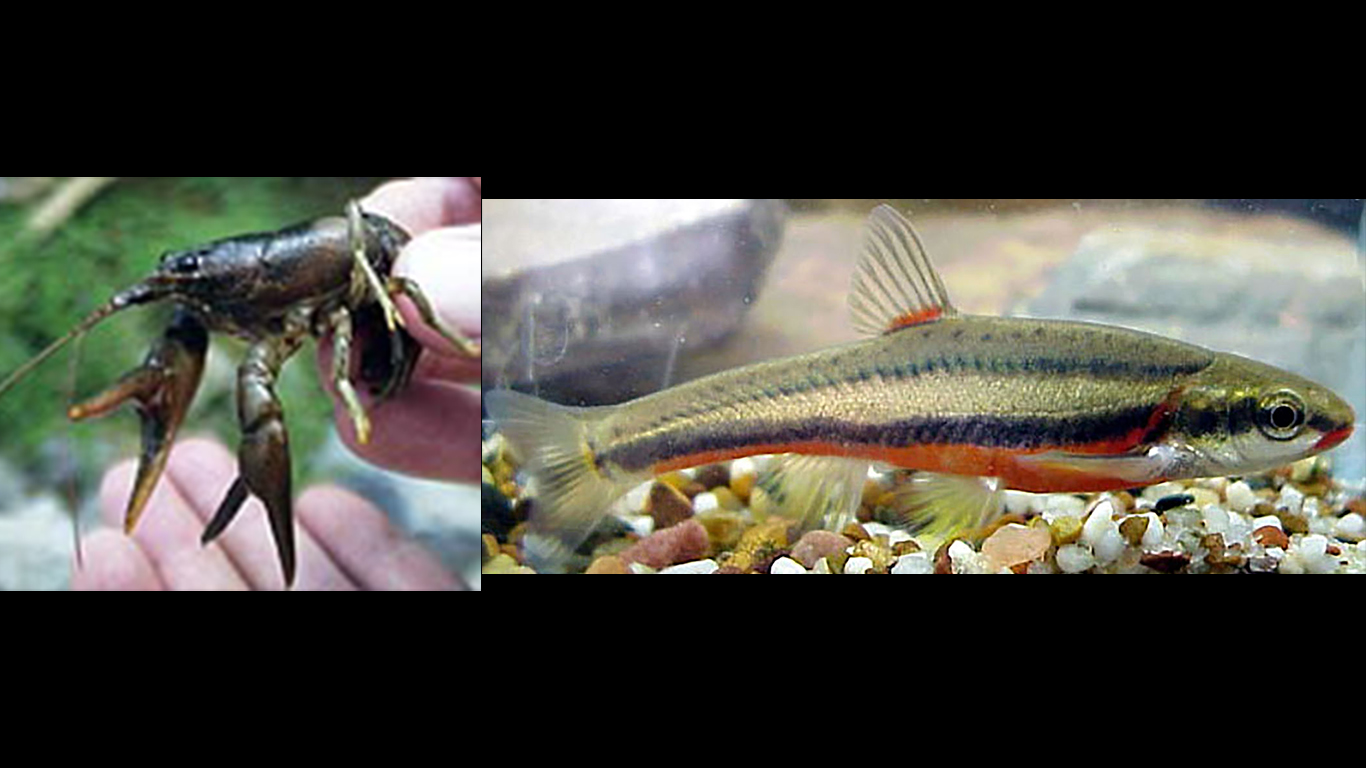
42. Tennessee
> Selected endangered species: Nashville Crayfish (orconectes shoupi), Laurel Dace (chrosomus saylori)
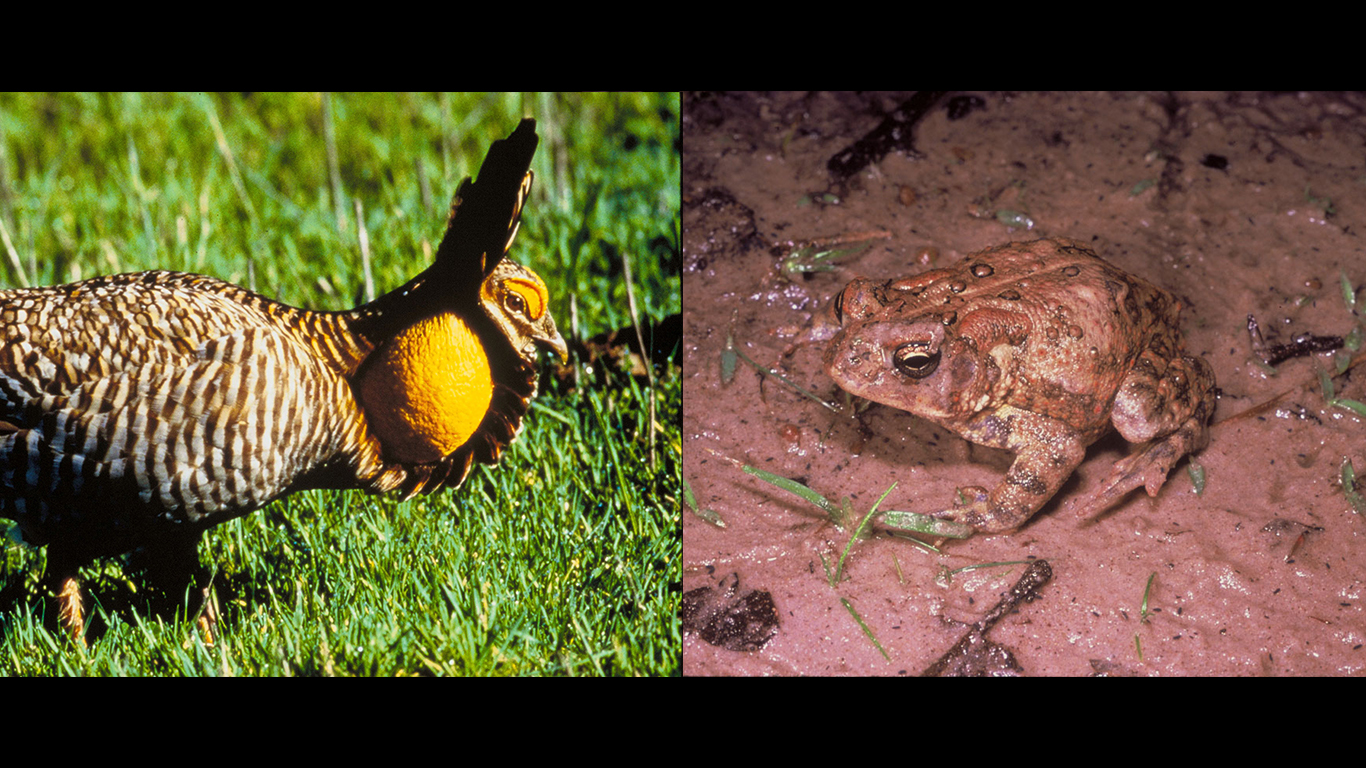
43. Texas
> Selected endangered species: Attwater’s Prairie-Chicken (tympanuchus cupido attwateri), Houston Toad (bufo houstonensis)
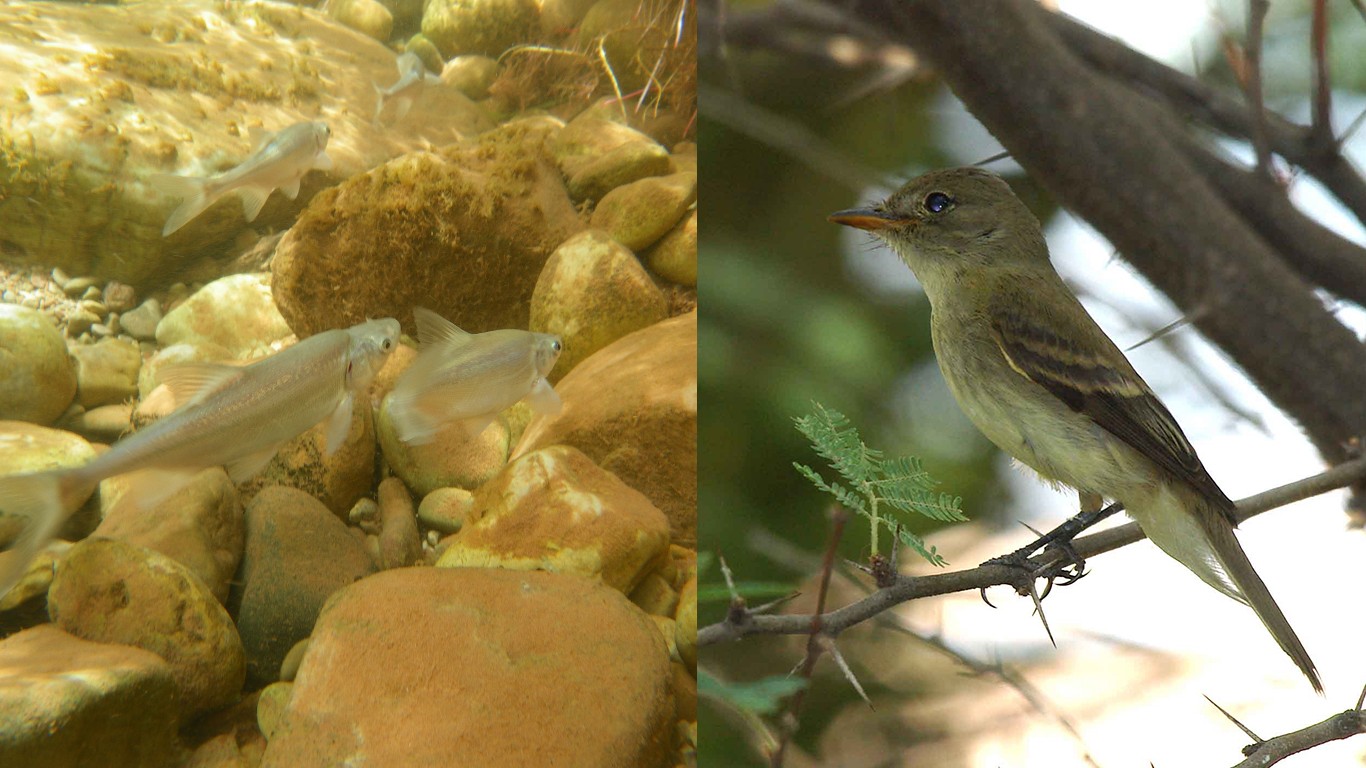
44. Utah
> Selected endangered species: Humpback chub (Gila cypha), Southwestern Willow Flycatcher (empidonax traillii extimus)
[in-text-ad-2]
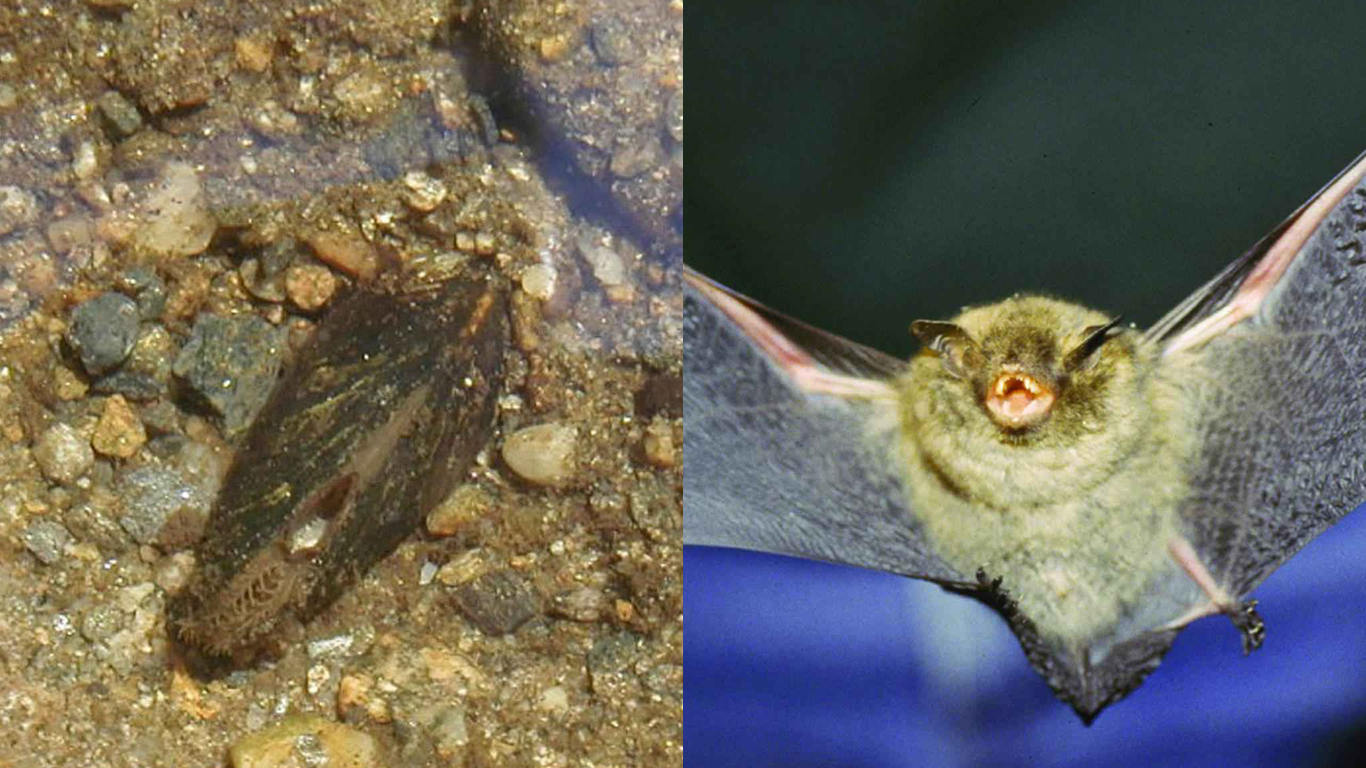
45. Vermont
> Selected endangered species: Dwarf Wedgemussel (alasmidonta heterodon), Indiana Bat (myotis sodalis)
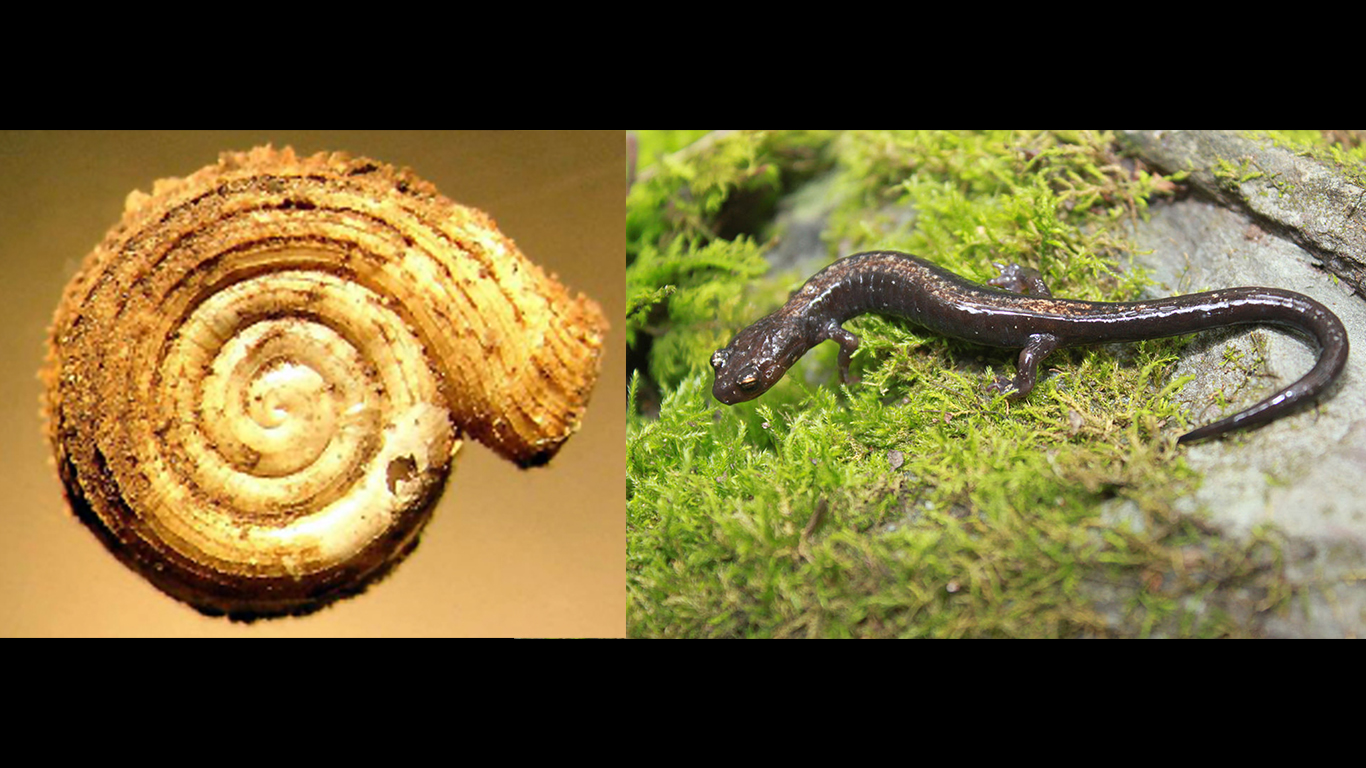
46. Virginia
> Selected endangered species: Shenandoah Salamander (plethodon shenandoah), Virginia Fringed Mountain Snail (polygyriscus virginianus)
[in-text-ad]
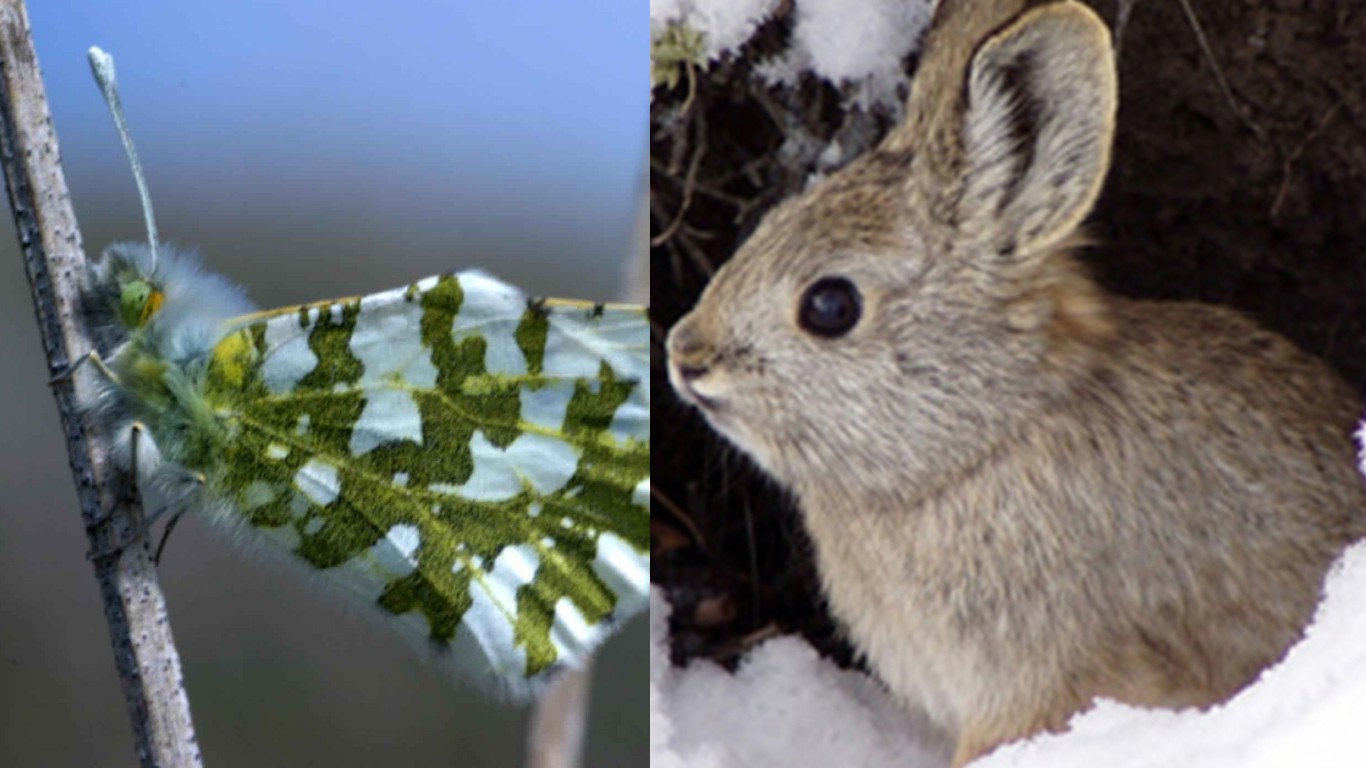
47. Washington
> Selected endangered species: Columbia Basin Pygmy Rabbit (brachylagus idahoensis), Island marble Butterfly (Euchloe ausonides insulanus)
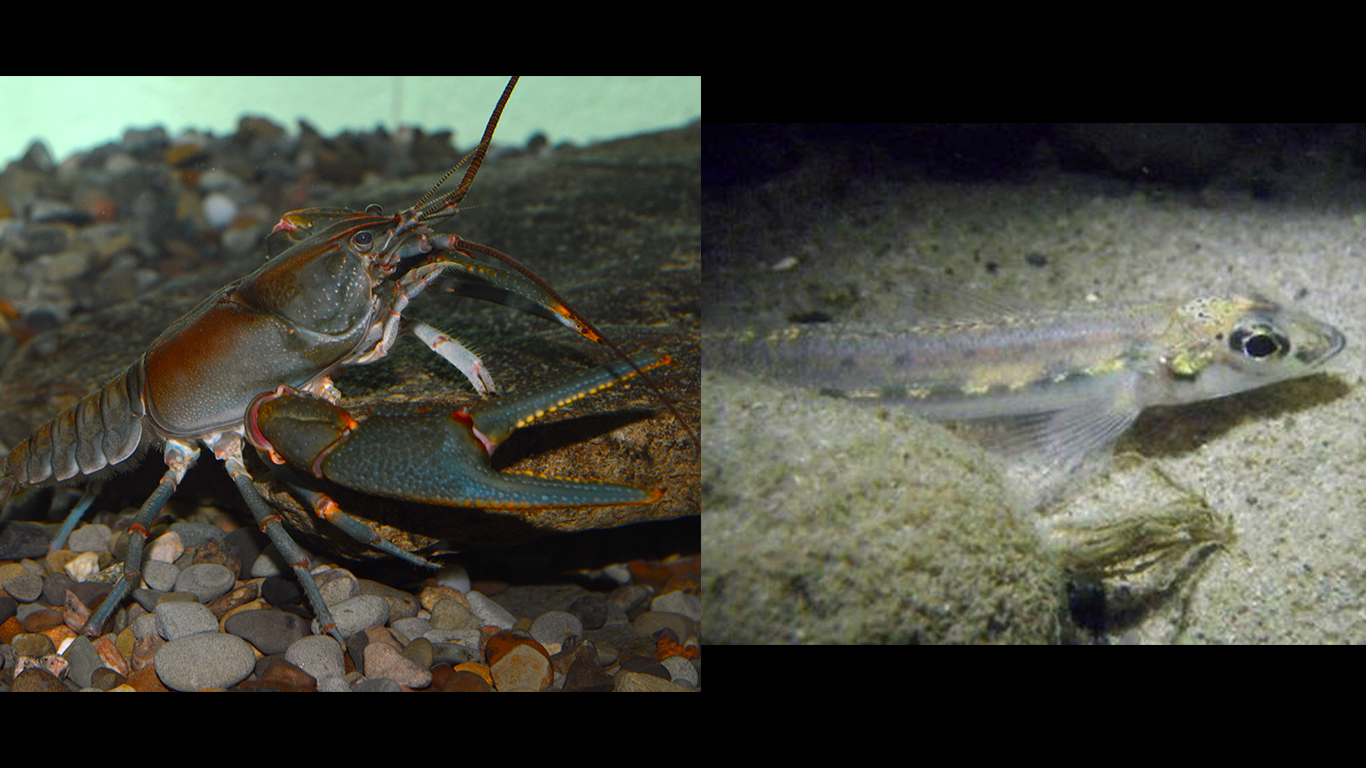
48. West Virginia
> Selected endangered species: Guyandotte River Crayfish (cambarus veteranus), Diamond Darter (crystallaria cincotta)
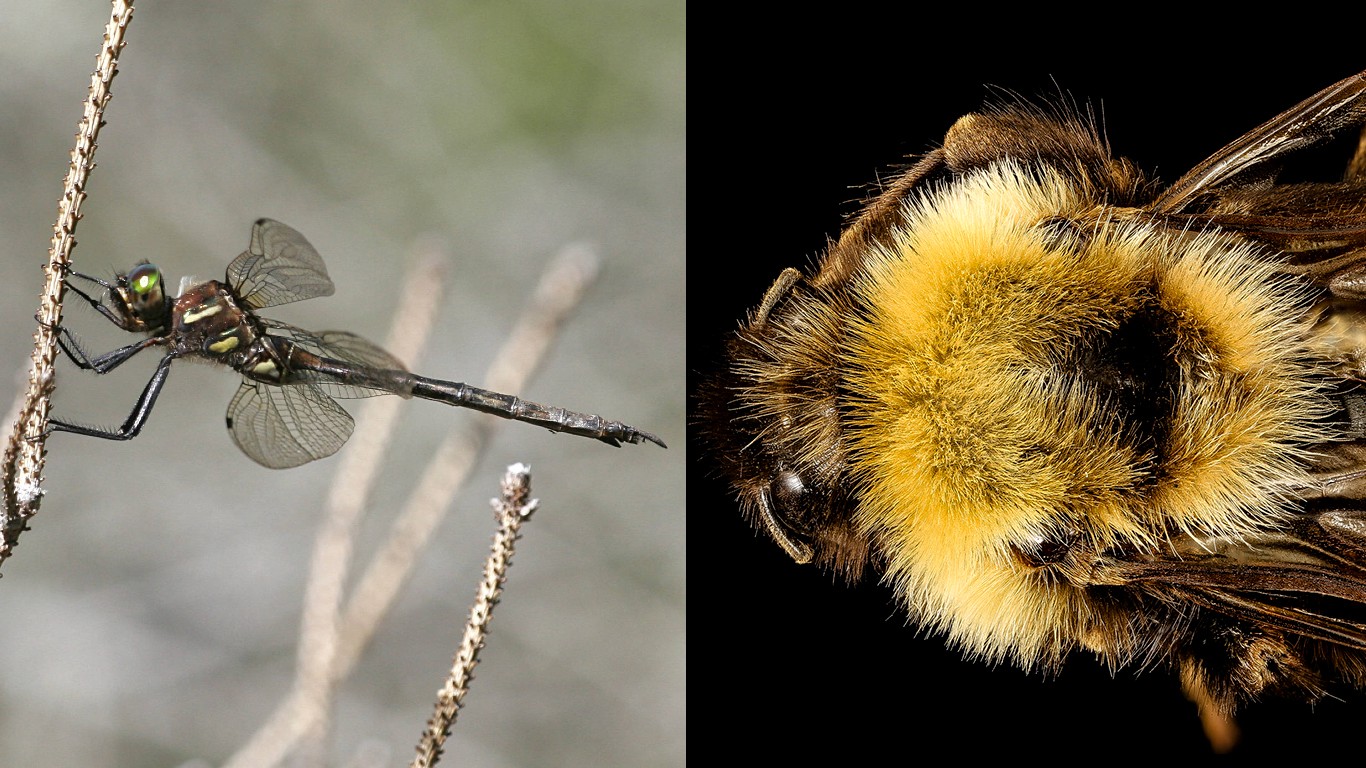
49. Wisconsin
> Selected endangered species: Rusty Patched Bumble Bee (bombus affinis), Hine’s emerald dragonfly (Somatochlora hineana)
[in-text-ad-2]
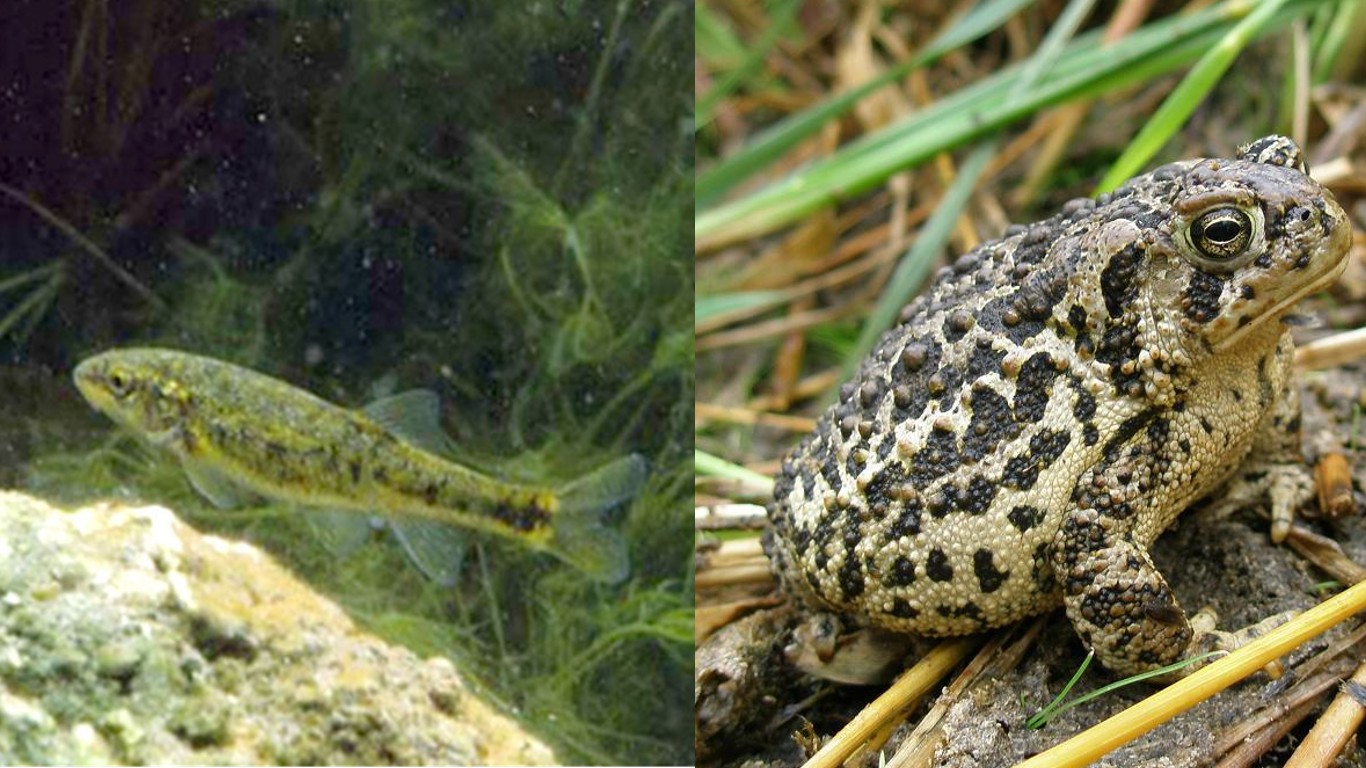
50. Wyoming
> Selected endangered species: Kendall Warm Springs Dace (rhinichthys osculus thermalis), Wyoming Toad (Bufo hemiophrys baxteri)
Detailed Findings & Methodology
Since the passage of the endangered species legislation, some animals have made a comeback. These include the American alligators, brown pelicans, eastern Steller sea lions, and the nation’s symbol, the bald eagle.
The road to preserving the nation’s endangered species is long. Even with more than four decades of legislated protection for endangered animals, the U.S. is ranked second worldwide in the number of endangered species by country, with about 1,500 domestic species threatened, according to the Mother Nature Network website.
The number of endangered species varies by state. Hawaii accounts for about 0.2% of the U.S. land area, but it is home to 25% of the federally endangered species, according to the Mother Nature Network. Among animals at risk in Hawaii is the Hawaiian monk seal, one of Earth’s most endangered animals. There are only about 1,000 in existence.
As one might expect, there are various species of sea turtles, rabbits, and cranes on this list. More generally, it includes mammals, marine animals, fish, insects, birds, amphibians, reptiles, and more. Some are more well known, like species of bats, butterfly, and salmon, while others are less known, like species of amphipod and limpet.
Included among the animals most at risk are different species of mollusks such as the spectaclecase, a freshwater mussel. Mollusks are often threatened because of dams, which disrupt water flow patterns and change water temperature. Losses of mollusks imperil the ecosystem because they are a food source for fish, and they recycle plant and animal waste that helps keep water clean.
To identify the most threatened animals in every state, 24/7 Tempo reviewed the U.S. Fish and Wildlife Service’s listing of endangered animals in the United States. Many of the endangered animals are not unique to one state but are threatened in a great number of states. Only 31 states have animals endangered only there. To find which of the threatened animals in these 31 states are most endangered, we turned to the International Union for Conservation of Nature’s inventory of threatened species. Many of the most threatened animals listed here were found to be “critically endangered” on the IUCN’s Red List. We used this same approach to evaluate the threat level of endangered animals in the remaining 19 states, but in these cases animals may be listed as endangered in other states as well.
The Average American Has No Idea How Much Money You Can Make Today (Sponsor)
The last few years made people forget how much banks and CD’s can pay. Meanwhile, interest rates have spiked and many can afford to pay you much more, but most are keeping yields low and hoping you won’t notice.
But there is good news. To win qualified customers, some accounts are paying almost 10x the national average! That’s an incredible way to keep your money safe and earn more at the same time. Our top pick for high yield savings accounts includes other benefits as well. You can earn up to 3.80% with a Checking & Savings Account today Sign up and get up to $300 with direct deposit. No account fees. FDIC Insured.
Click here to see how much more you could be earning on your savings today. It takes just a few minutes to open an account to make your money work for you.
Our top pick for high yield savings accounts includes other benefits as well. You can earn up to 4.00% with a Checking & Savings Account from Sofi. Sign up and get up to $300 with direct deposit. No account fees. FDIC Insured.
Thank you for reading! Have some feedback for us?
Contact the 24/7 Wall St. editorial team.
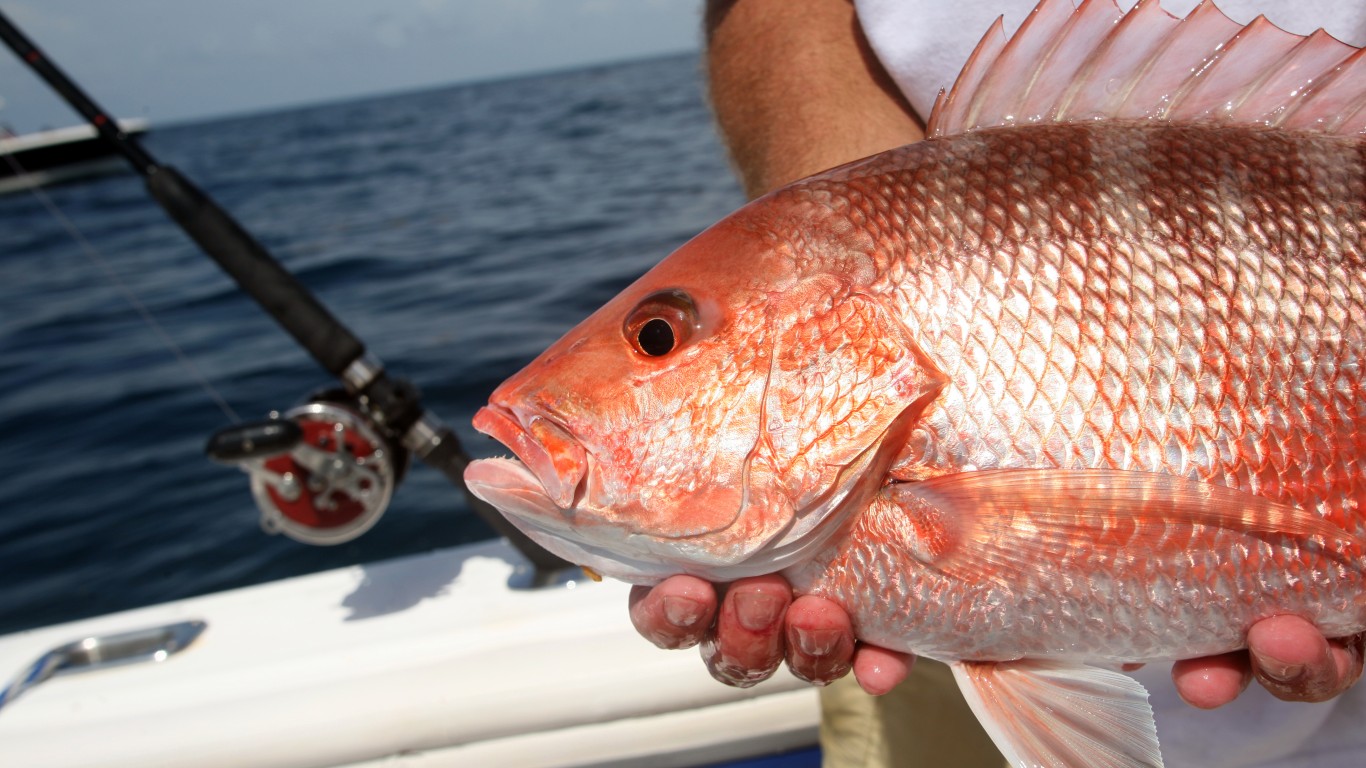 24/7 Wall St.
24/7 Wall St.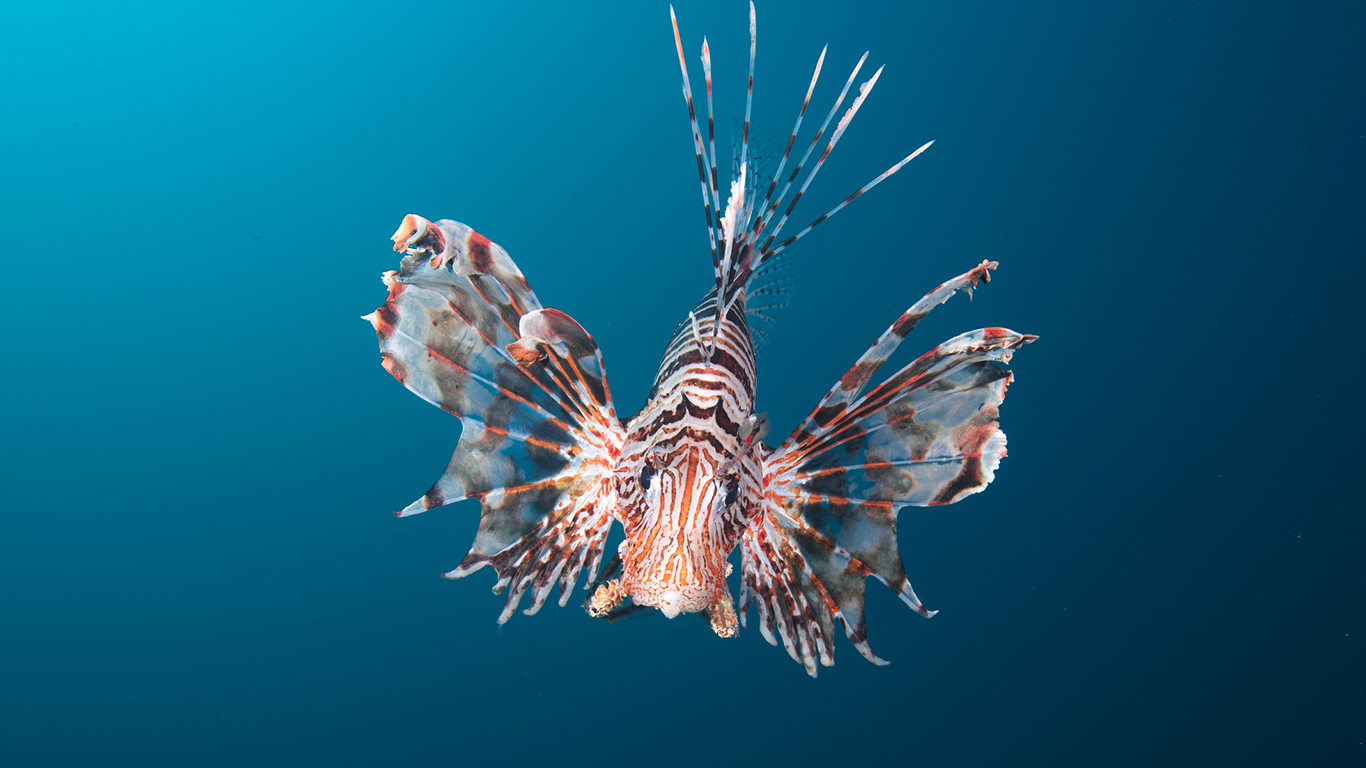 24/7 Wall St.
24/7 Wall St.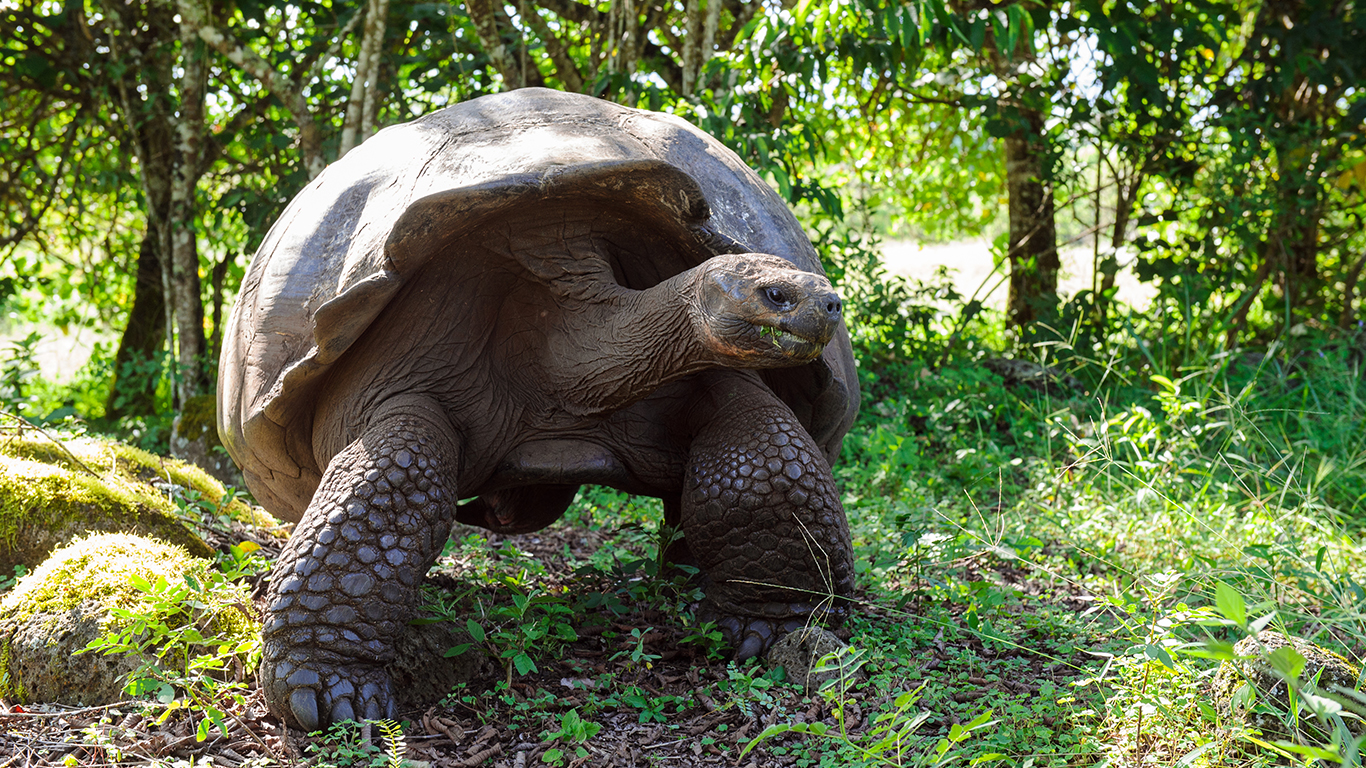 24/7 Wall St.
24/7 Wall St. 24/7 Wall St.
24/7 Wall St.
